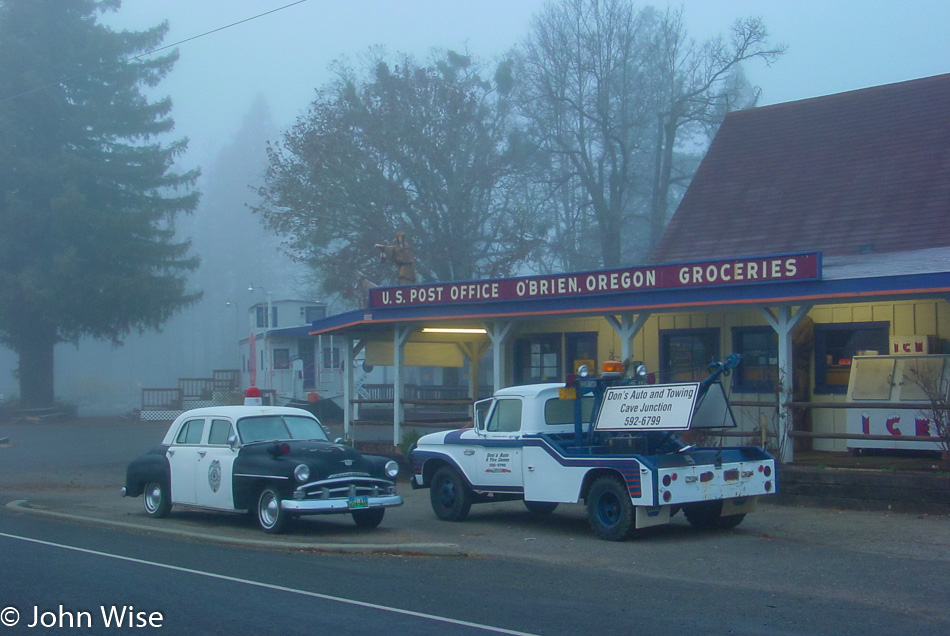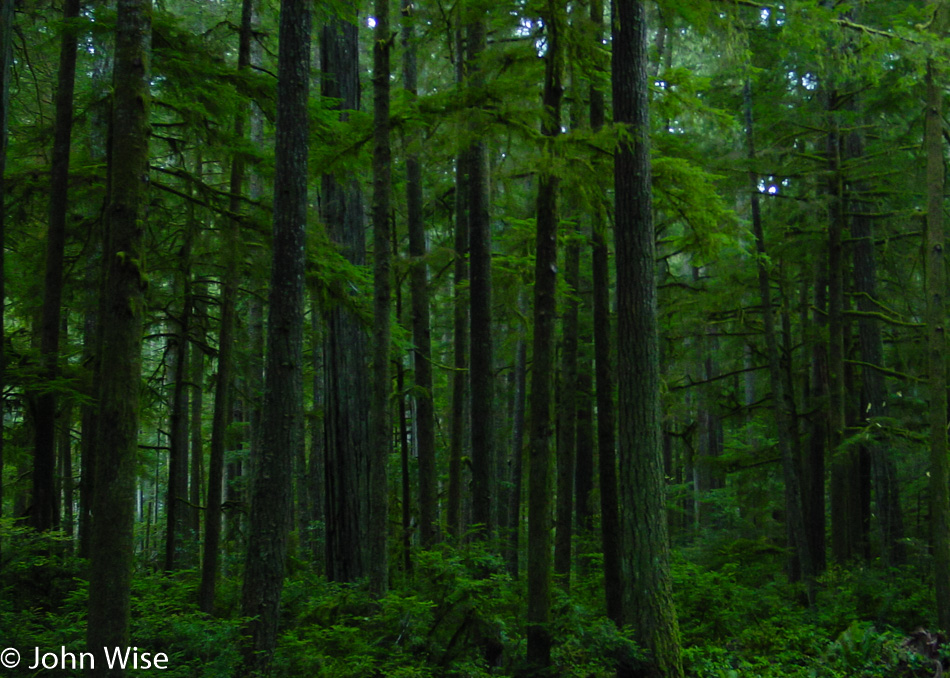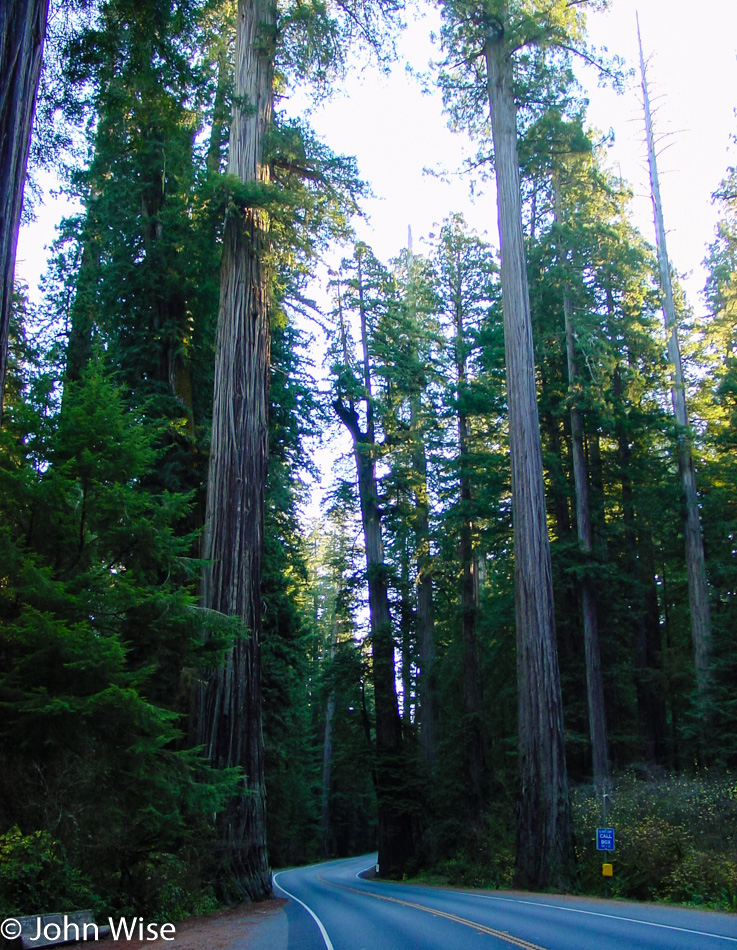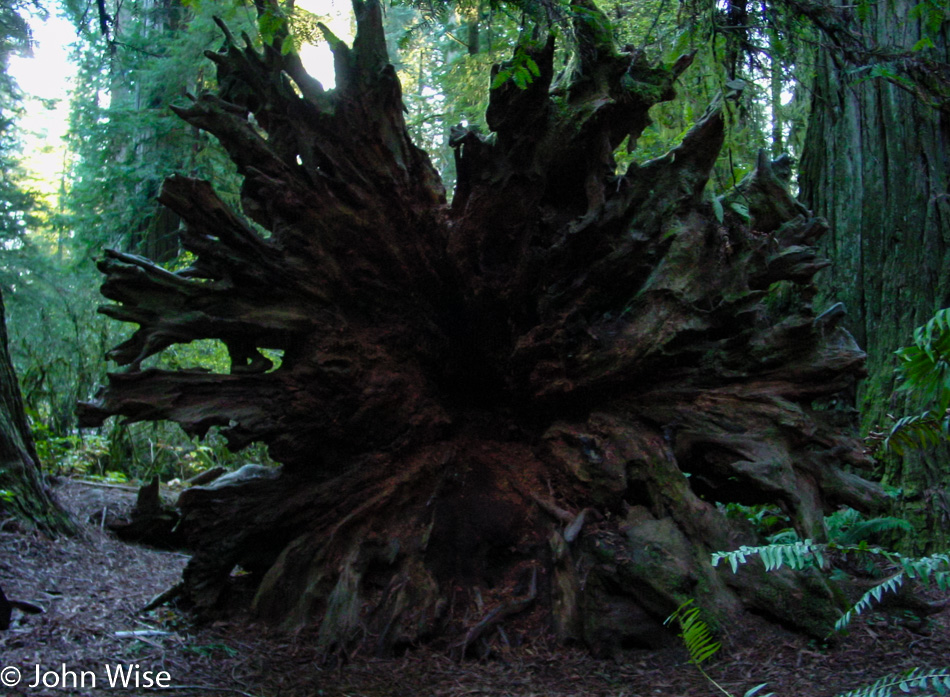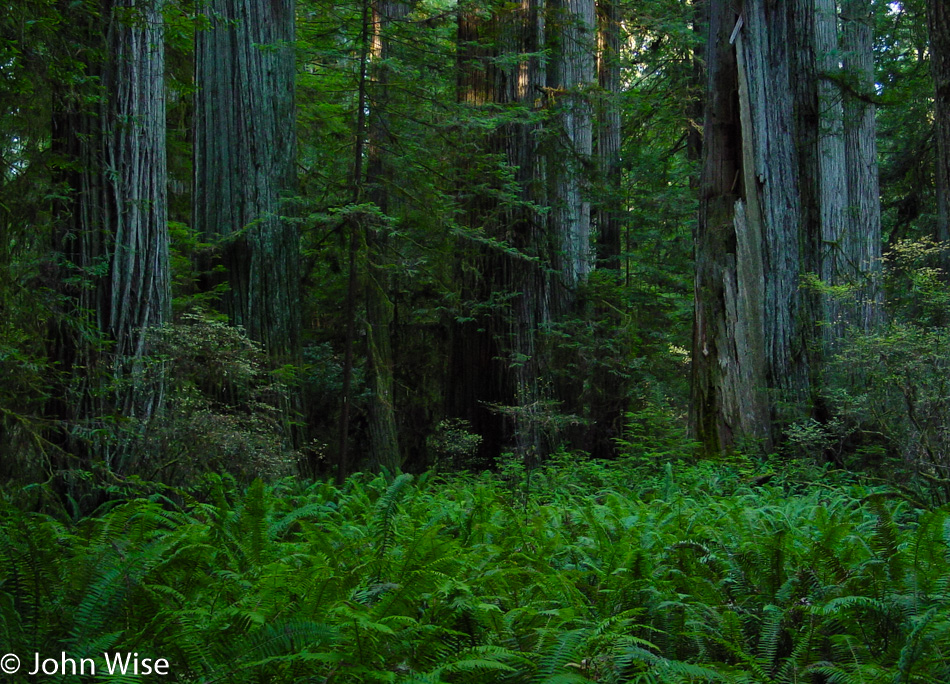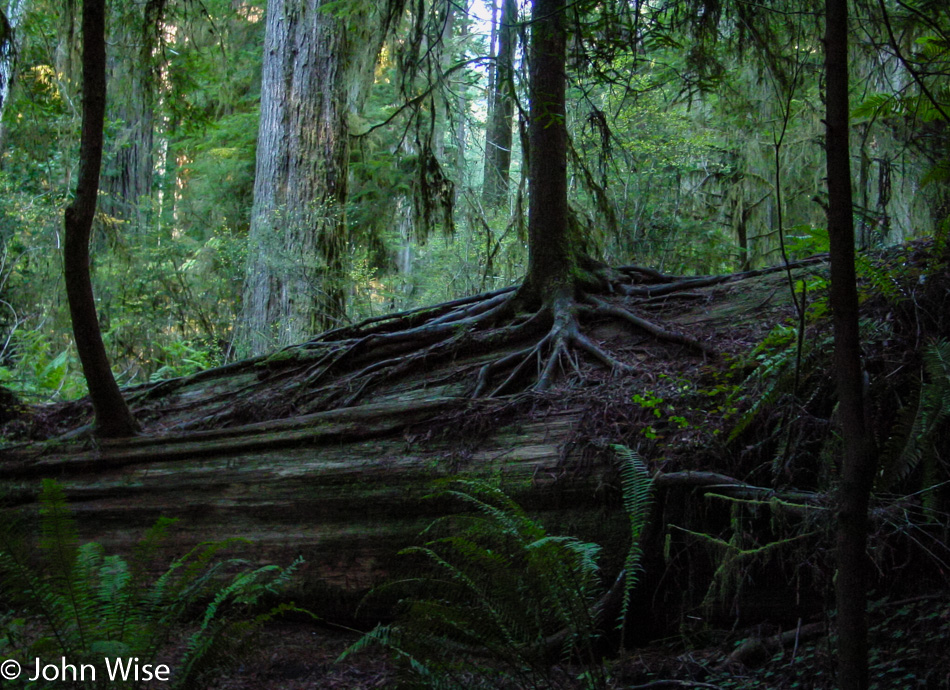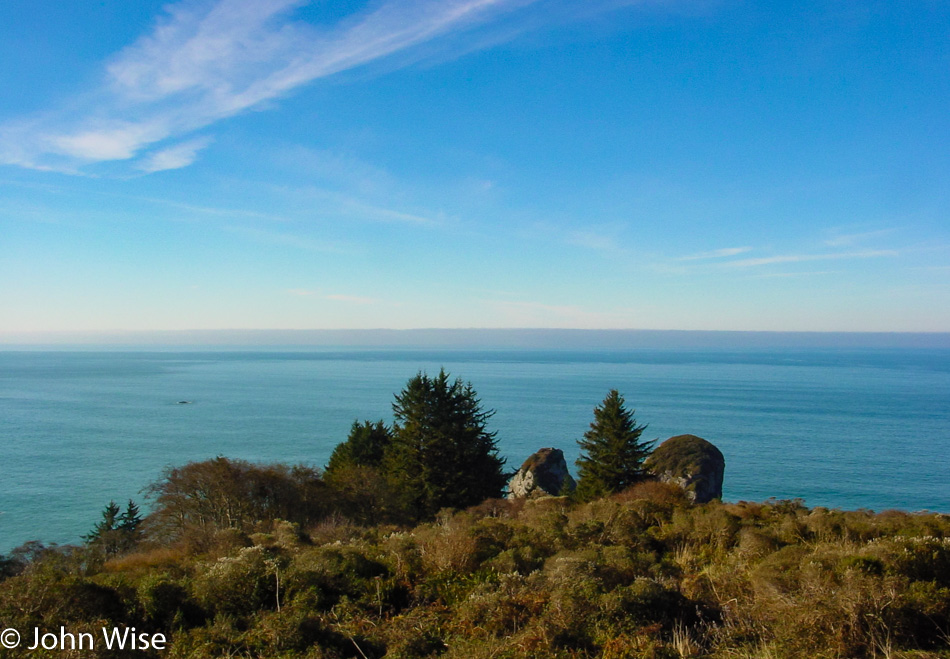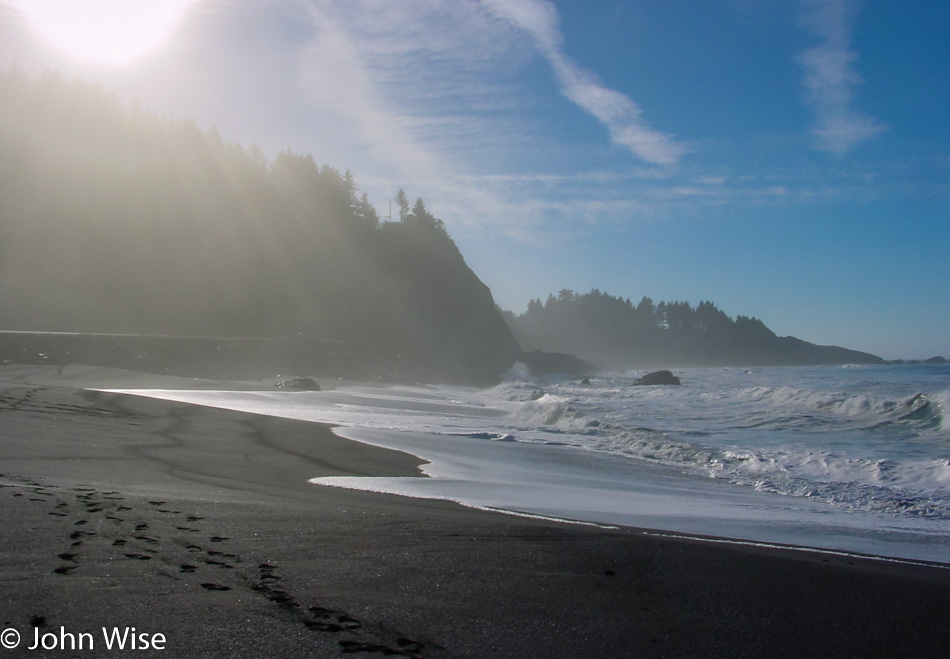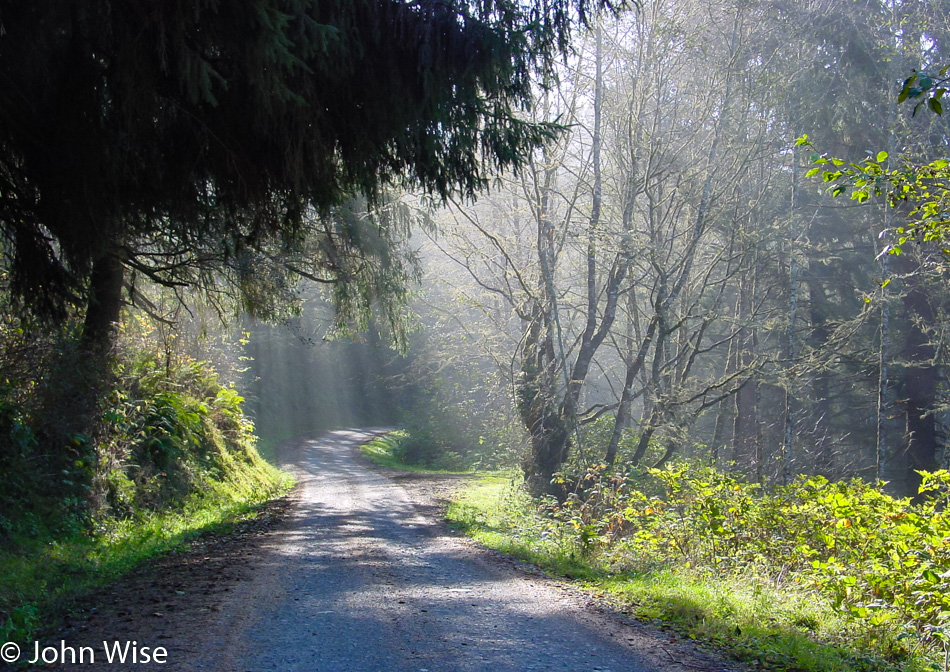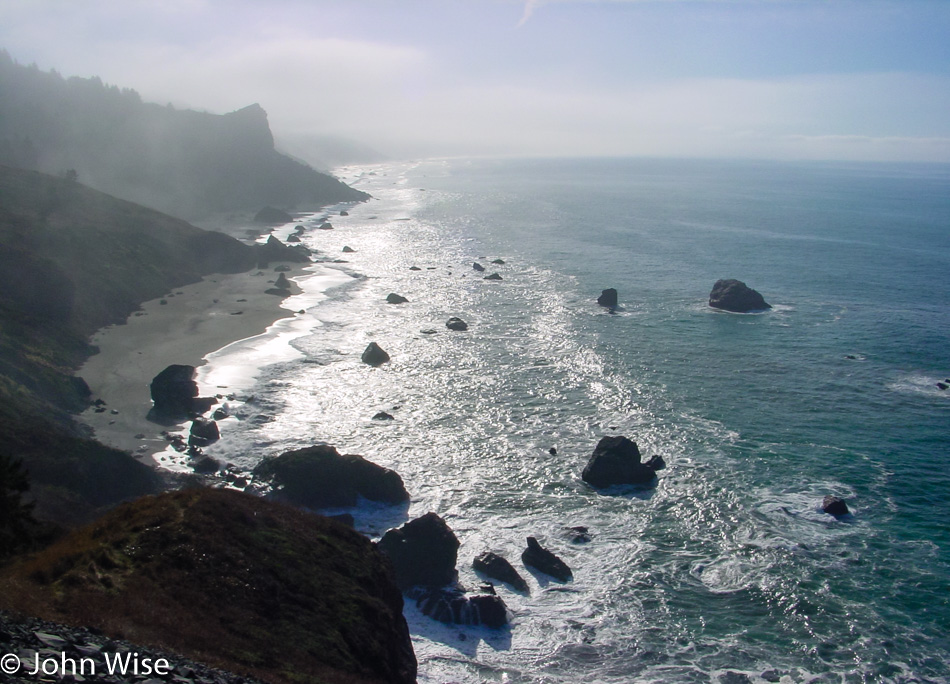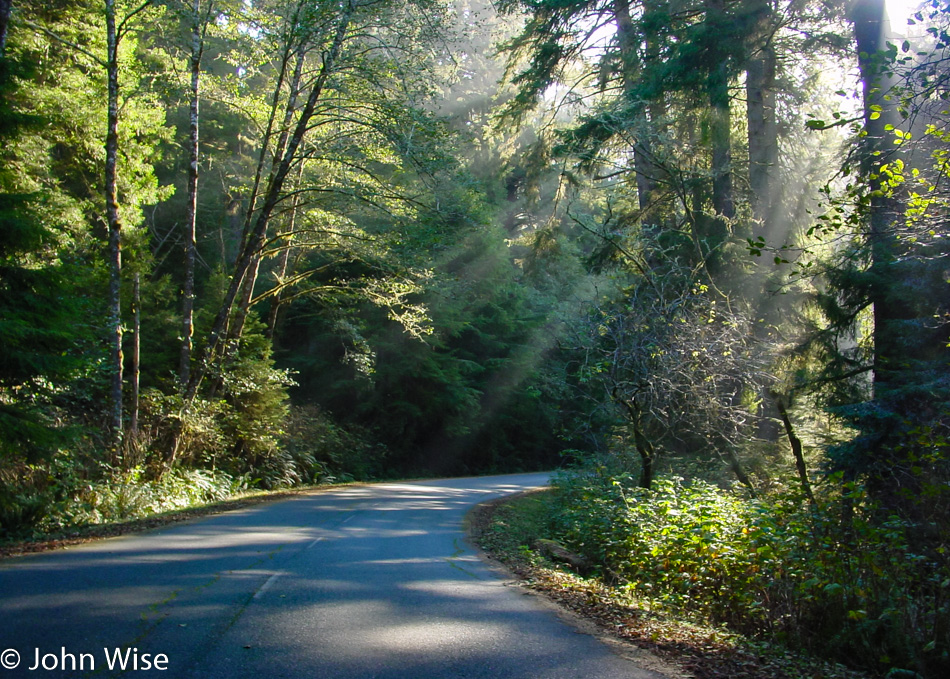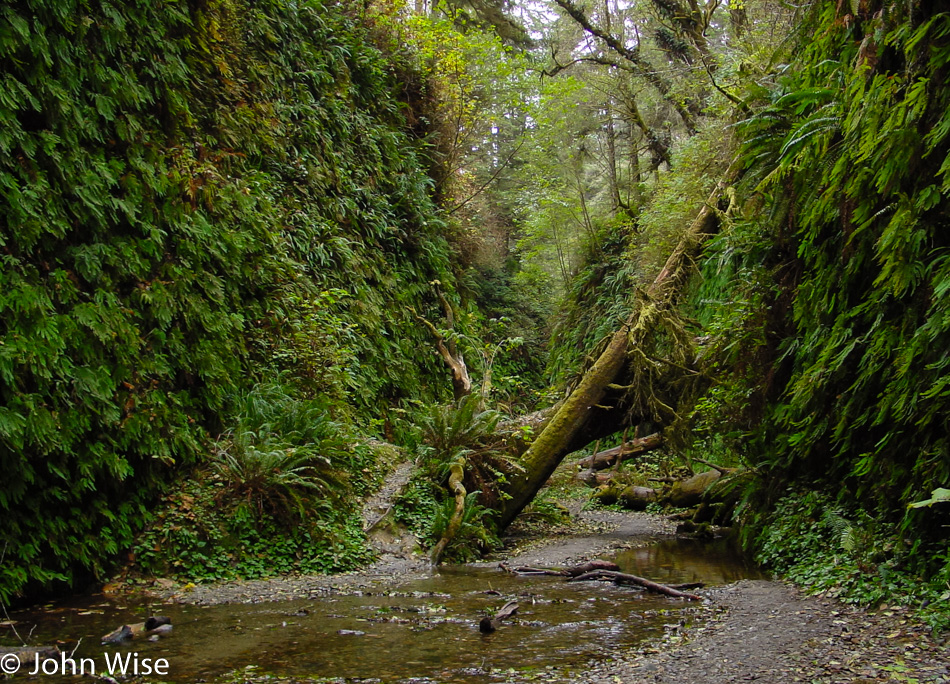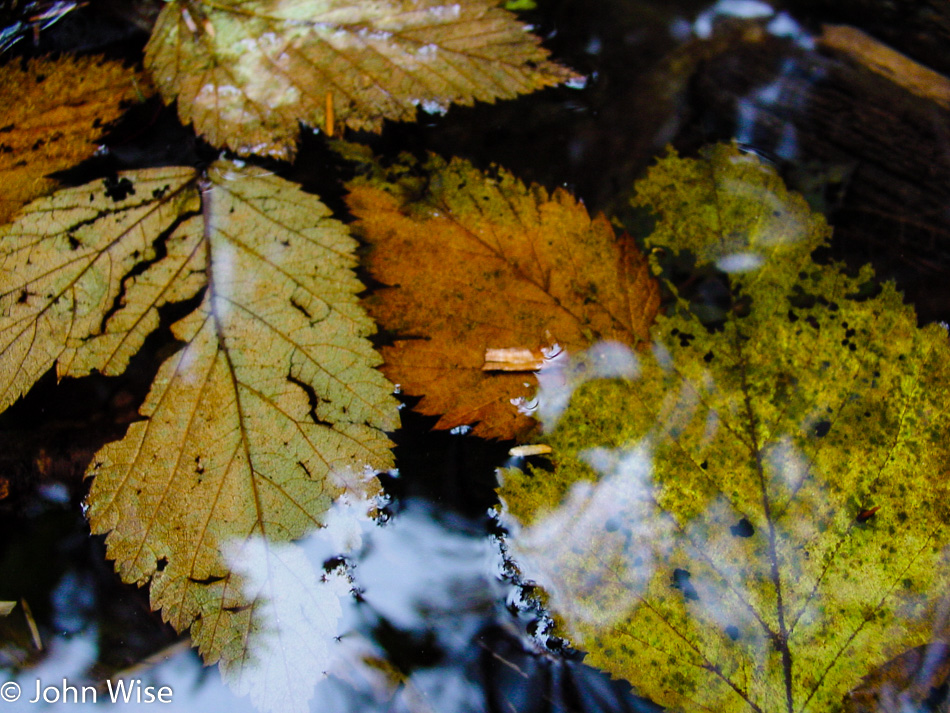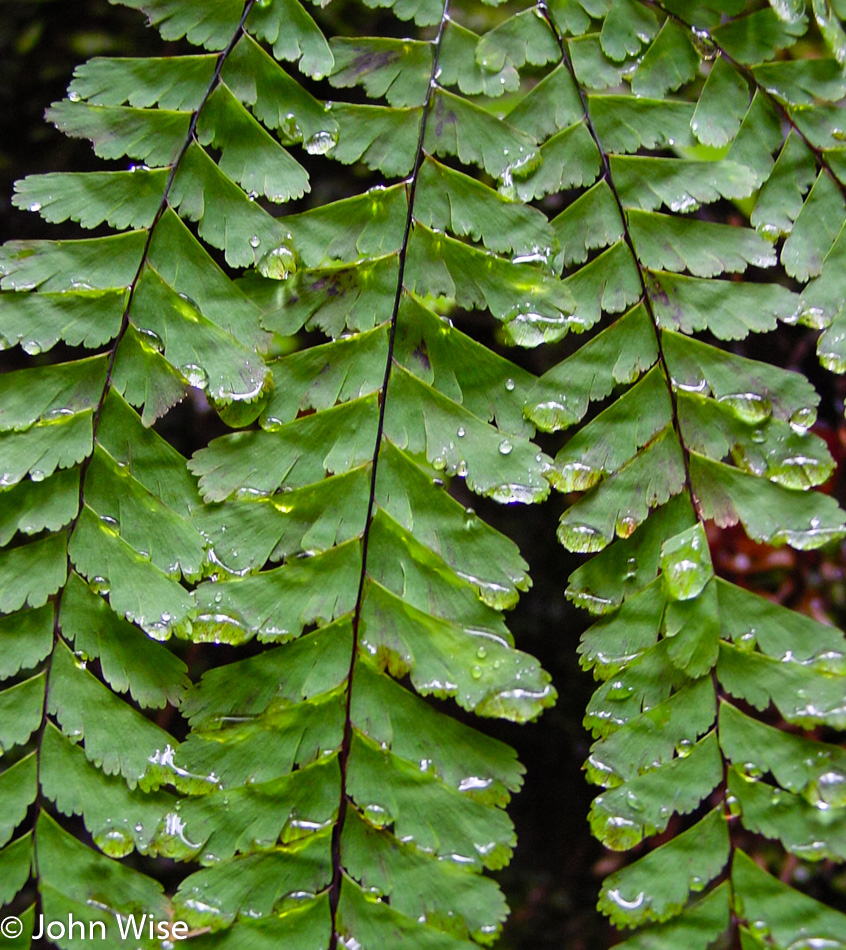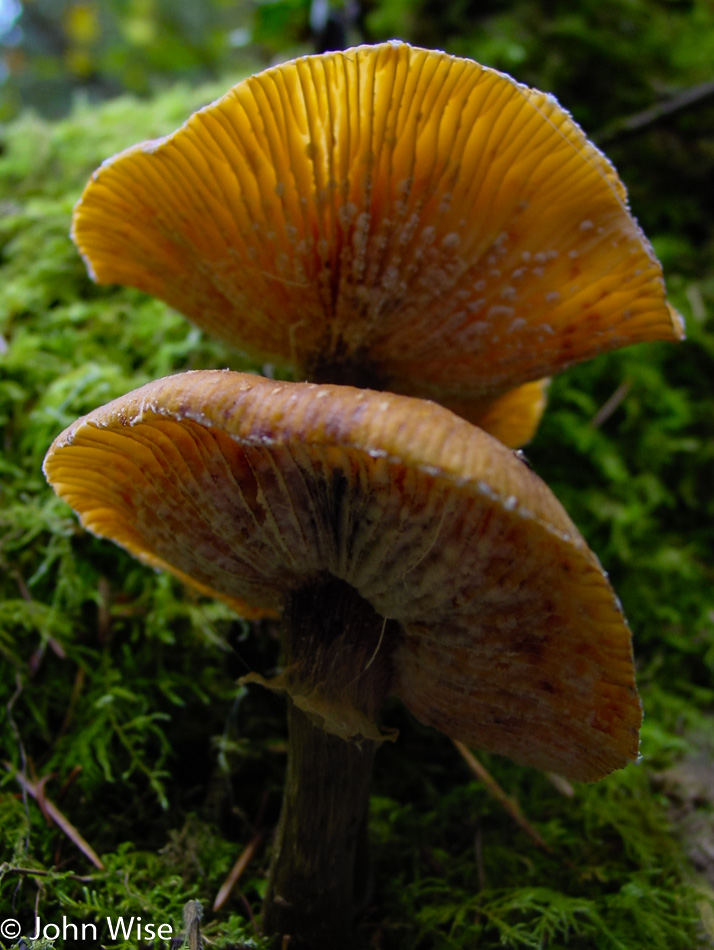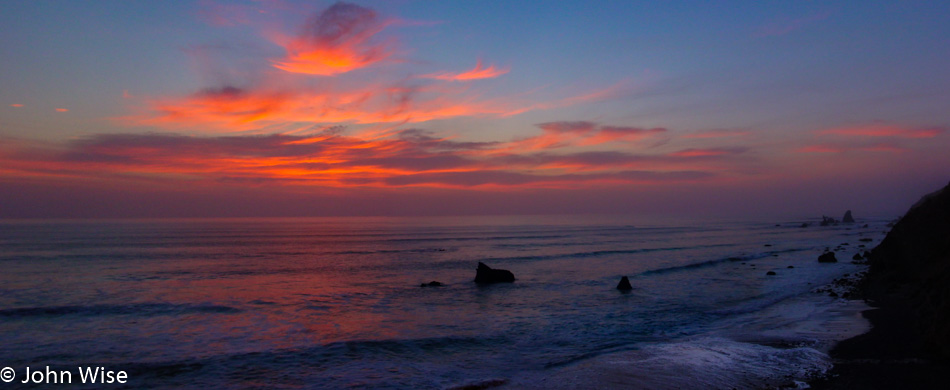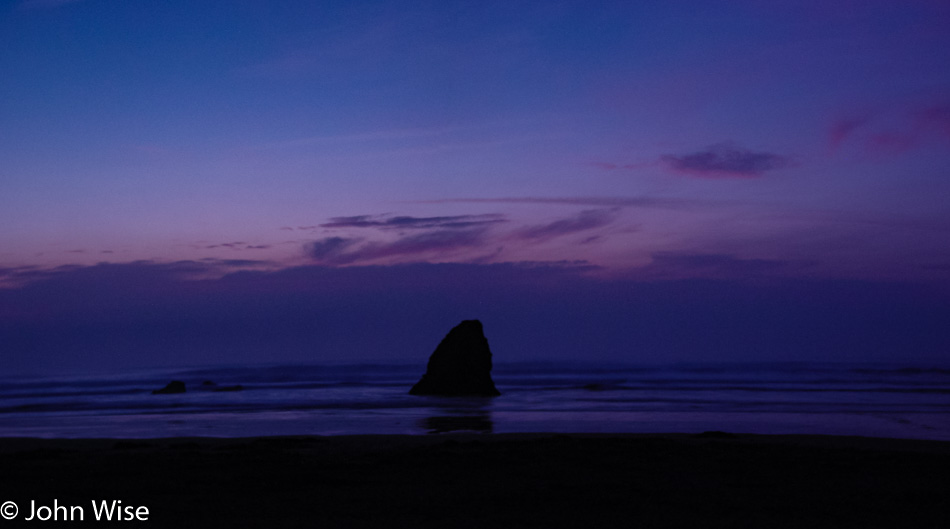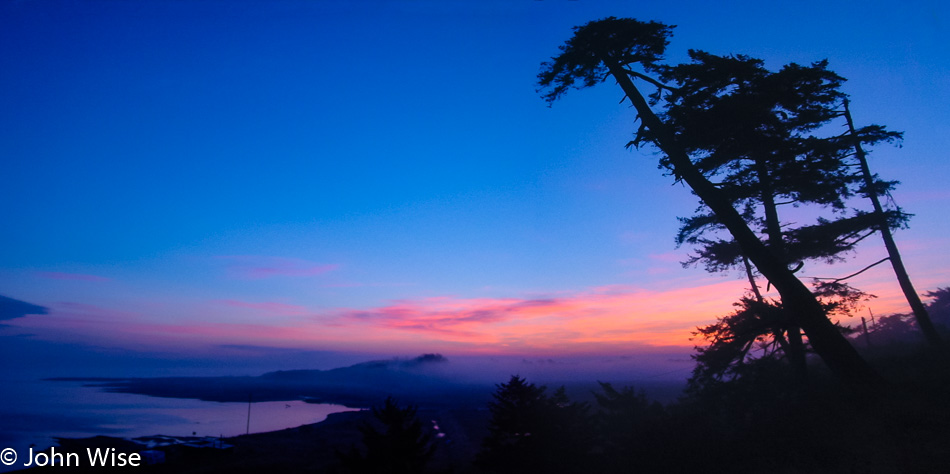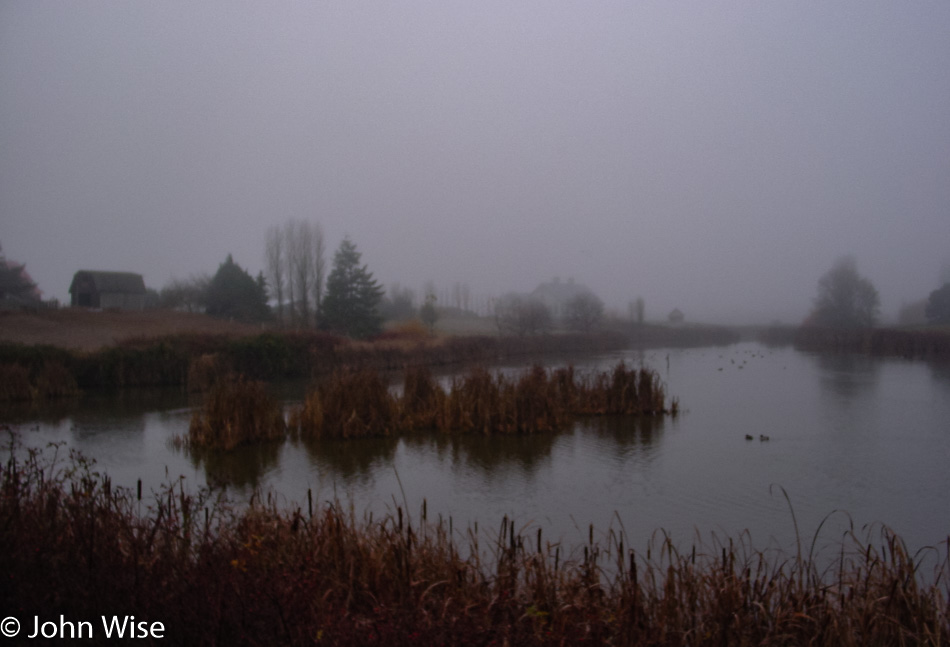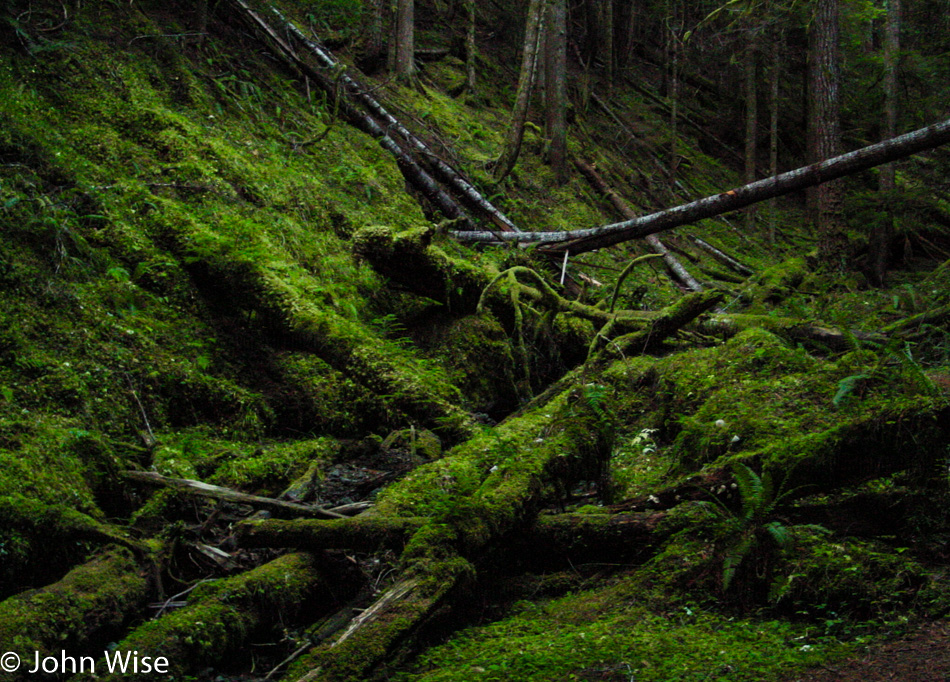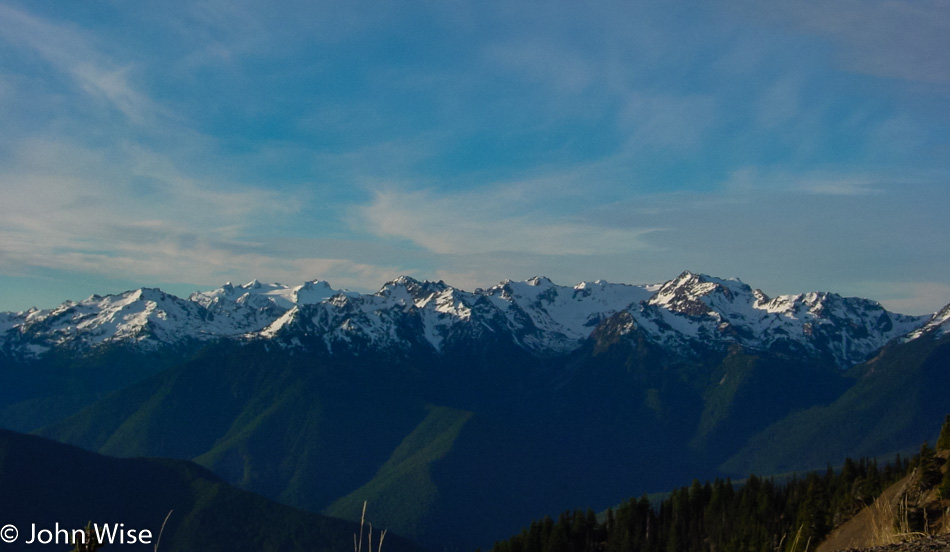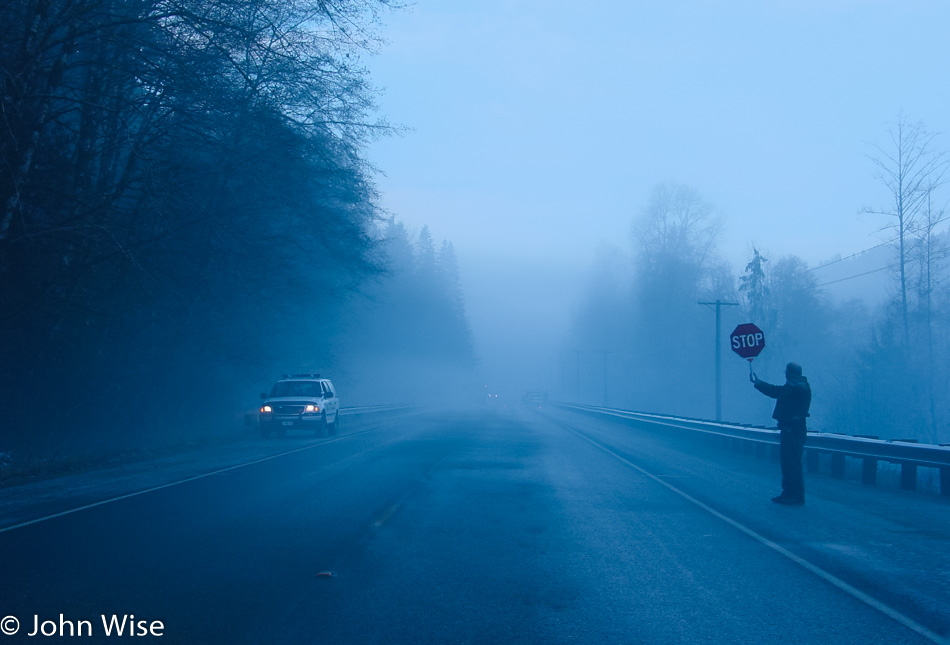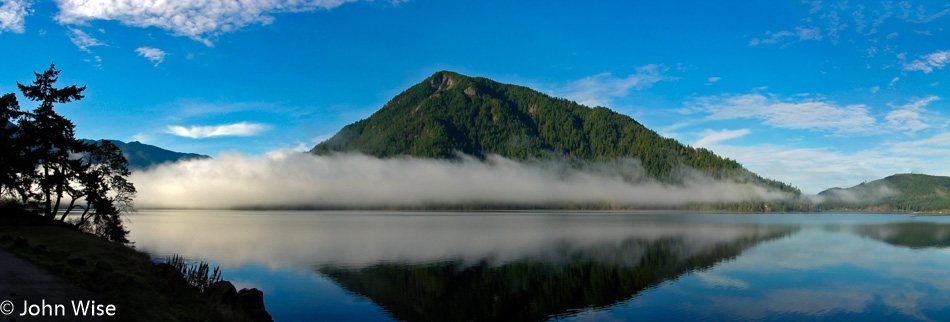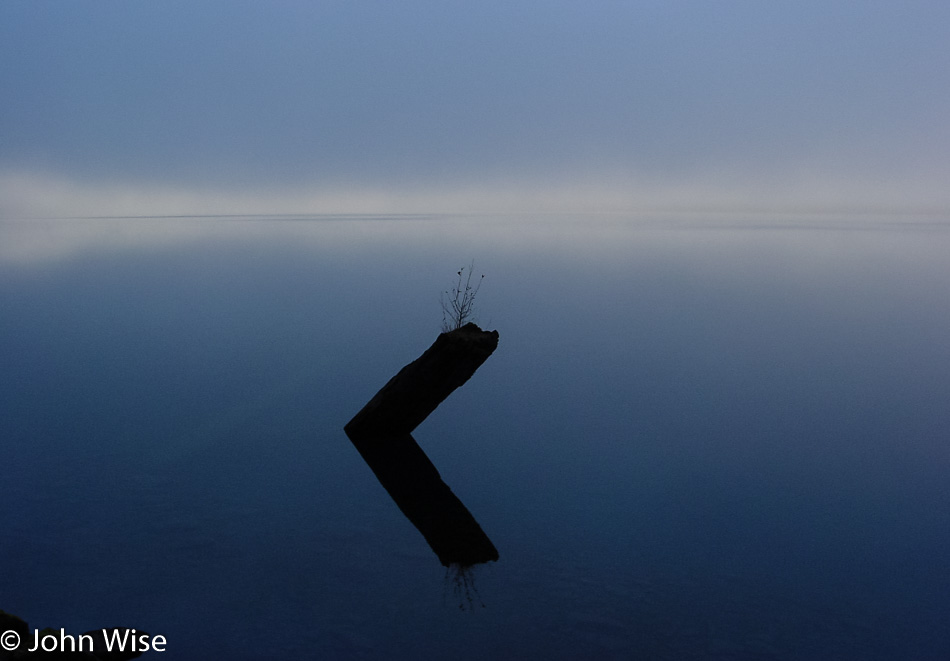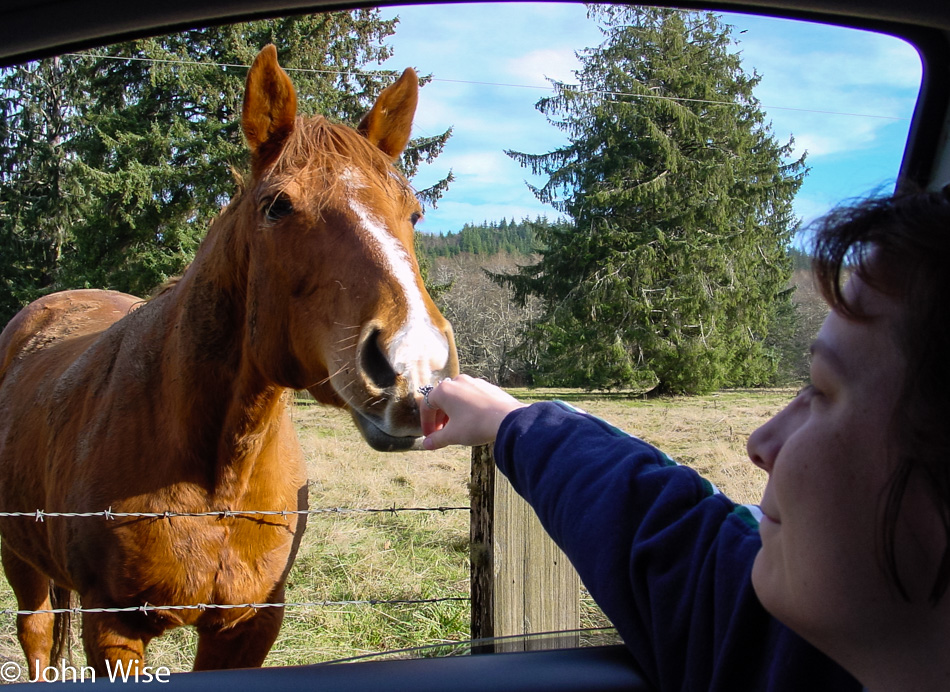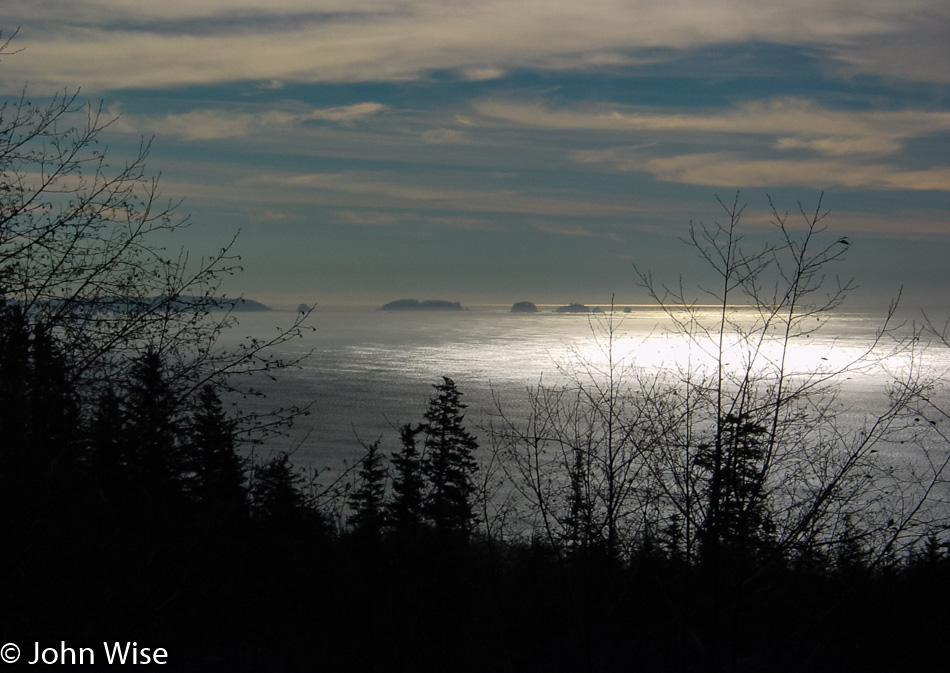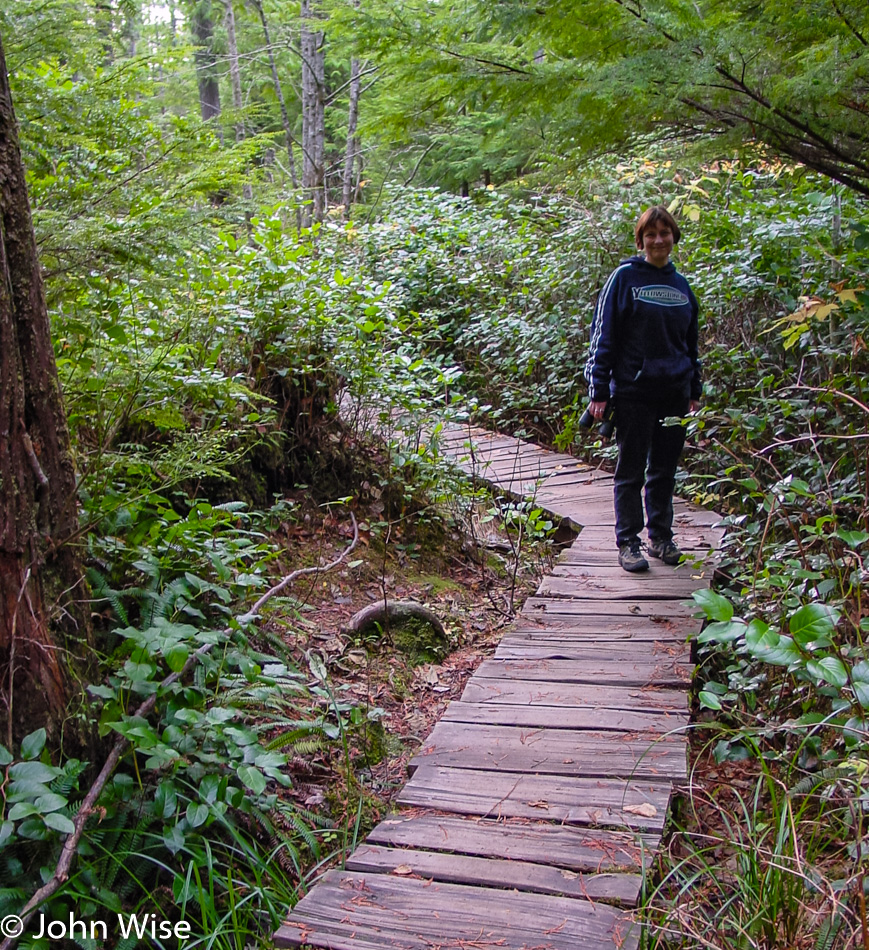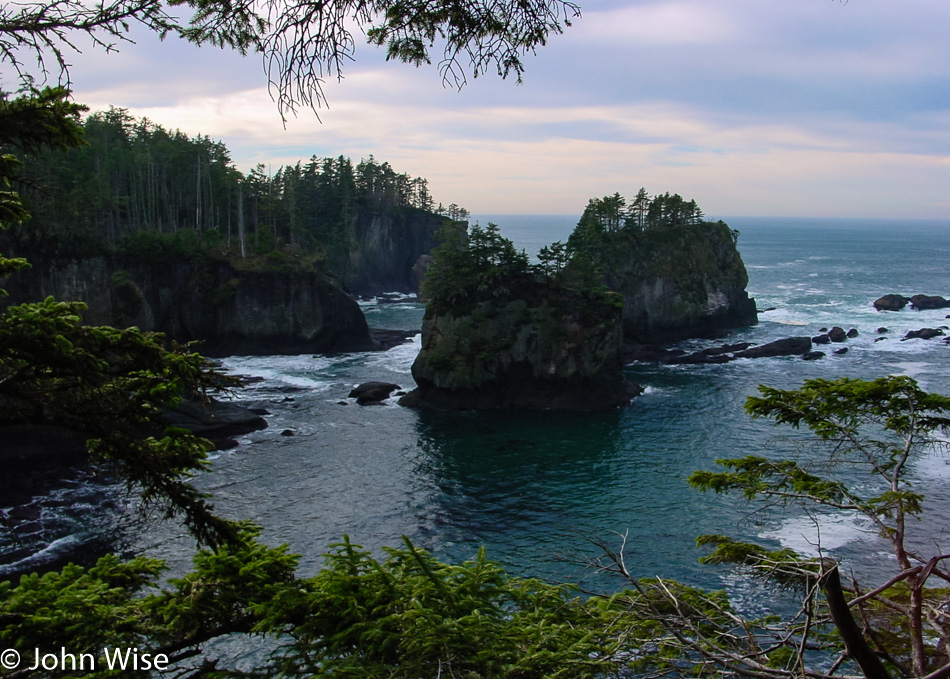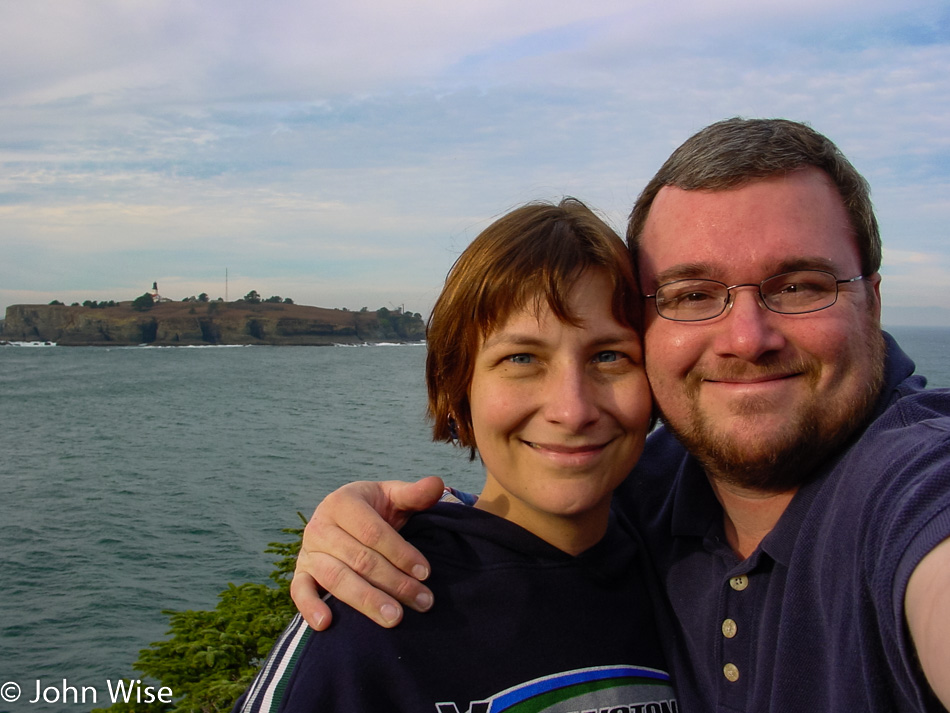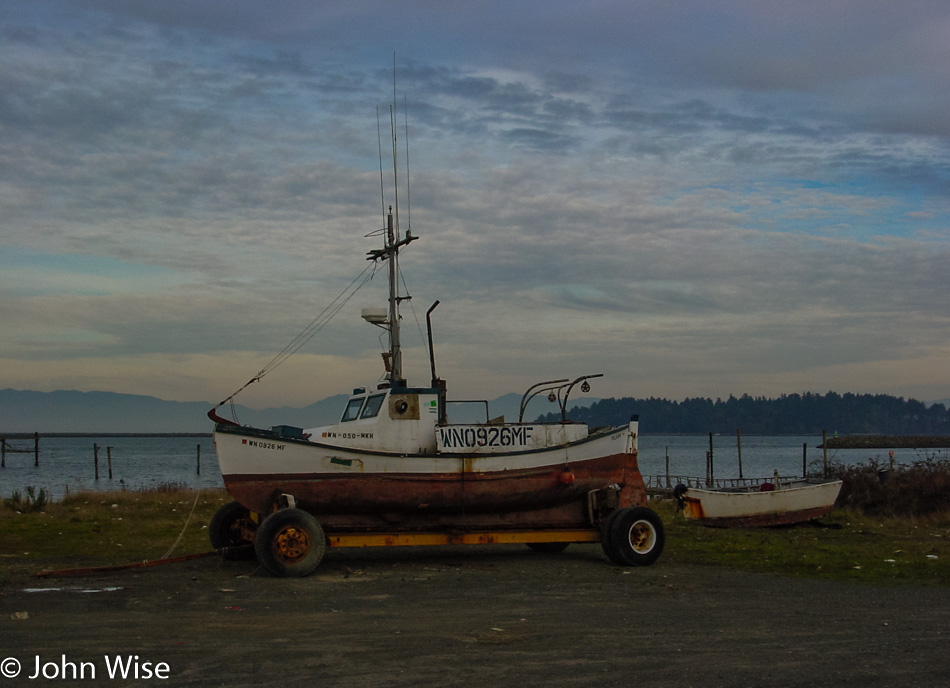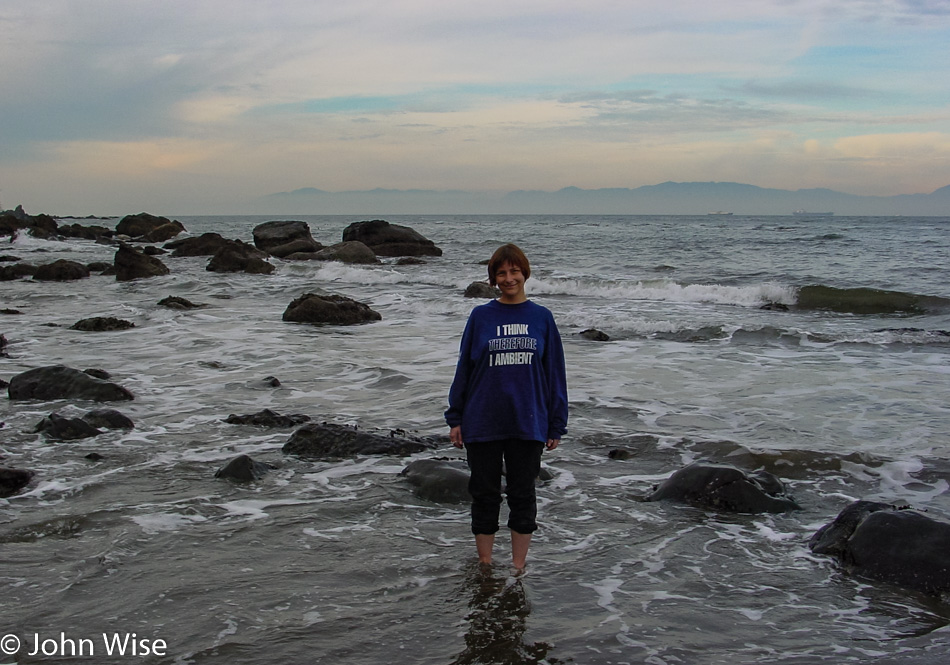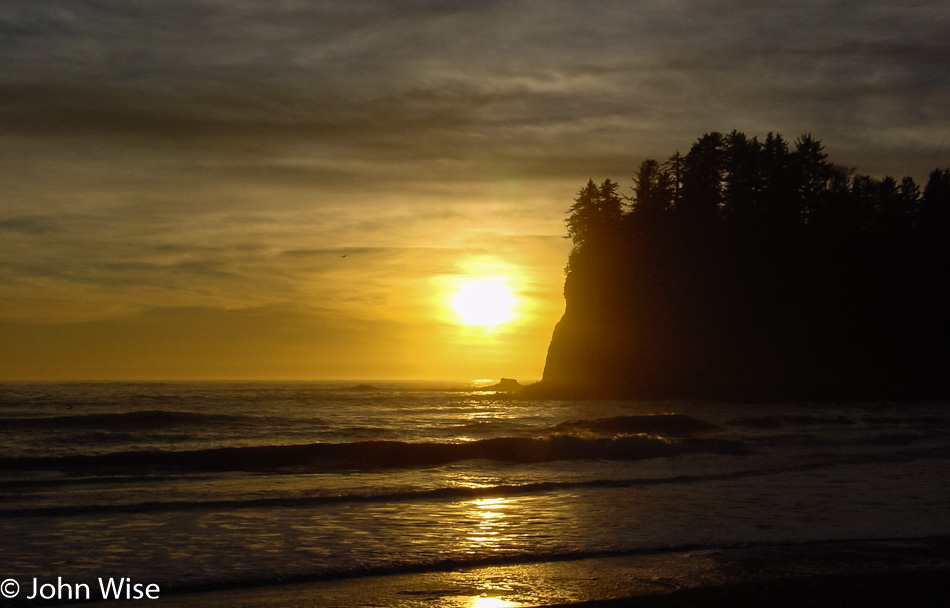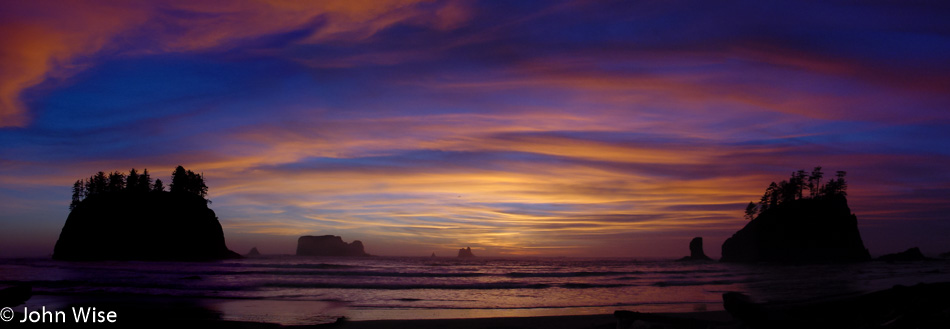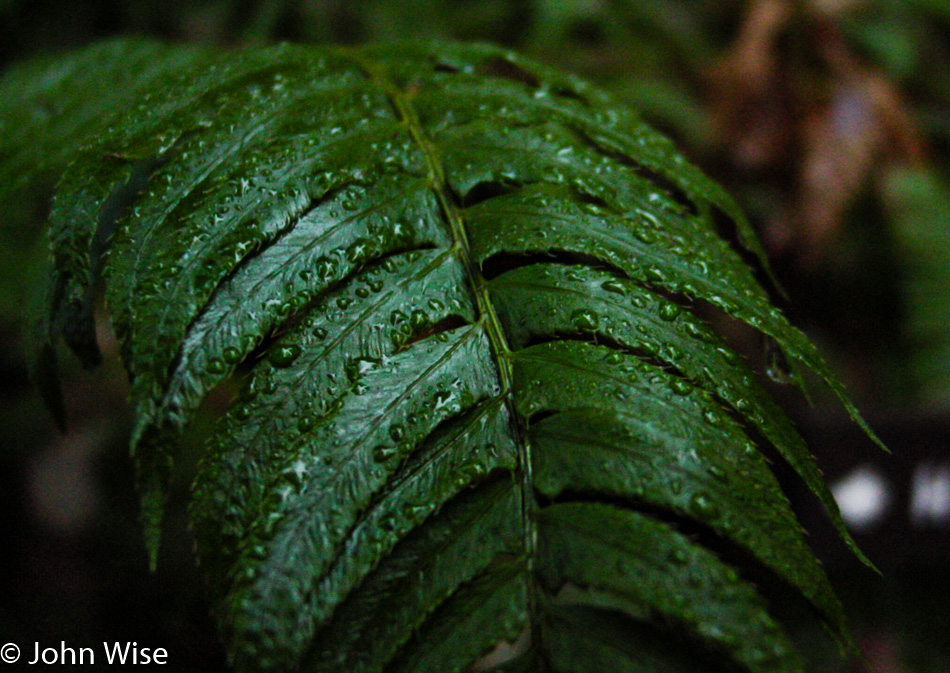
We woke before dawn in the sleepy town of Forks, Washington, to make our way south in the hopes of being the first into the Hoh Rain Forest which is a part of the Olympic National Park. Not only is this place not busy due to the time of year we are visiting, but we also should never really worry about crowds when we can creep down the main road into a park at five mph with nobody coming up behind us. The parking lot is empty as we leave the car and decide to take the Hall of Mosses trail, which sounds more mysterious and lush than the other trail known as the Spruce Nature Trail.
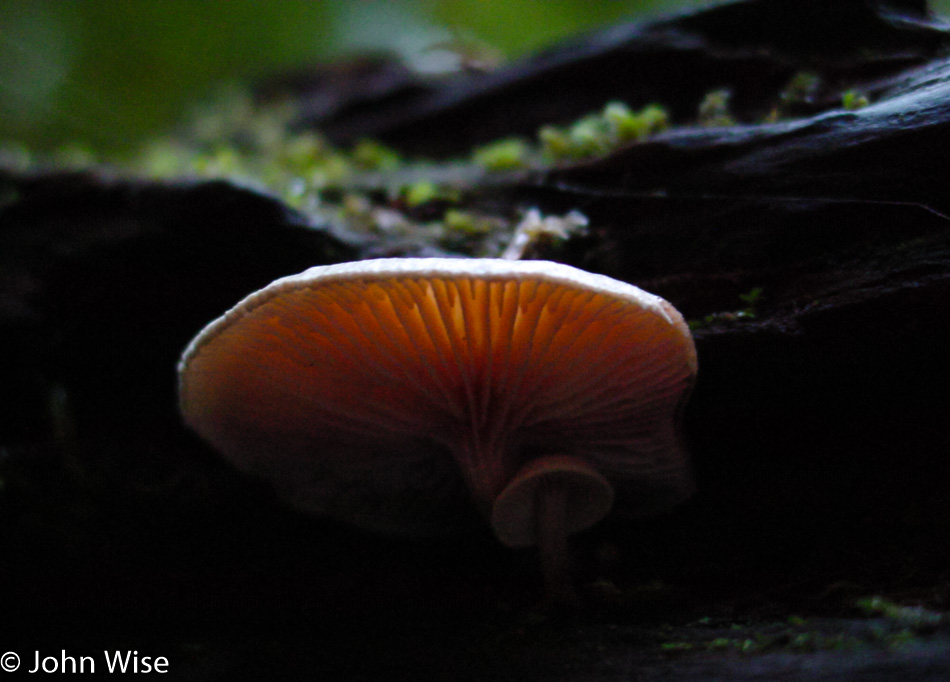
Below a fragment of bark which had tiny buds of moss growing upon it was a mushroom, and below its cap and gills was another even smaller mushroom growing in its shadow. What a perfect metaphor for us humans: the bark of humanity representing knowledge is adorned with pearls of wisdom found in the moss, while the tiny mushroom sits underneath the larger mushroom, representing our ignorance of the larger world while the sunlight of enlightenment is far above and beyond. If we are lucky, we will push through and find the luxury of knowing what is out there, but if we are too weak to throw off the sheltering layer, we may shrivel and die without ever knowing that we lived in the tiniest of universes within a greater world we could have otherwise explored.

So many fungi abound in the wet forest, working to overturn the decaying floor of fallen plant material as it pushes through, helping to turn things over on the way to them becoming mulch and the nutrients of life yet to occur. A part of me wants to pick the mushroom, to grab a handful of rotting slimy leaves and wet earth to inspect and smell what I have clutched in my grasp, but I also do not want to disturb the natural process of regeneration that is occurring in this biological and bacterial carpet of wonderment.
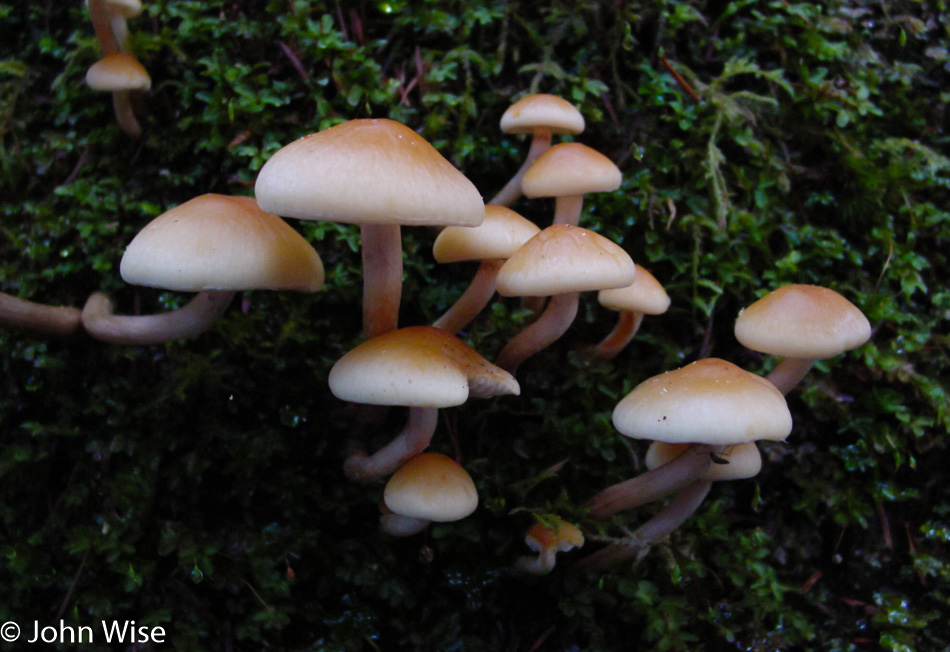
Out of the soil, atop dead trees, and clinging to the sides of living trees, mushrooms are everywhere in the rainforest. I cannot know the species, nor can I begin to guess how many variations of moss and liverworts might live here in this tiny patch of America. What I do know is that the clear-cut forest on our way to this corner has radically disturbed the balance of what nature has so perfectly articulated in its presentation. Instead of intelligently managing our forests so the diversity of our ecosystem has a fighting chance, we lay waste to the entire hillside and strip it bare so that even the microflora and fauna that require the shadowy depths below the tree canopy are burnt to a crisp ensuring we can sterilize the environment much as we do to our emotions of empathy for the planet.
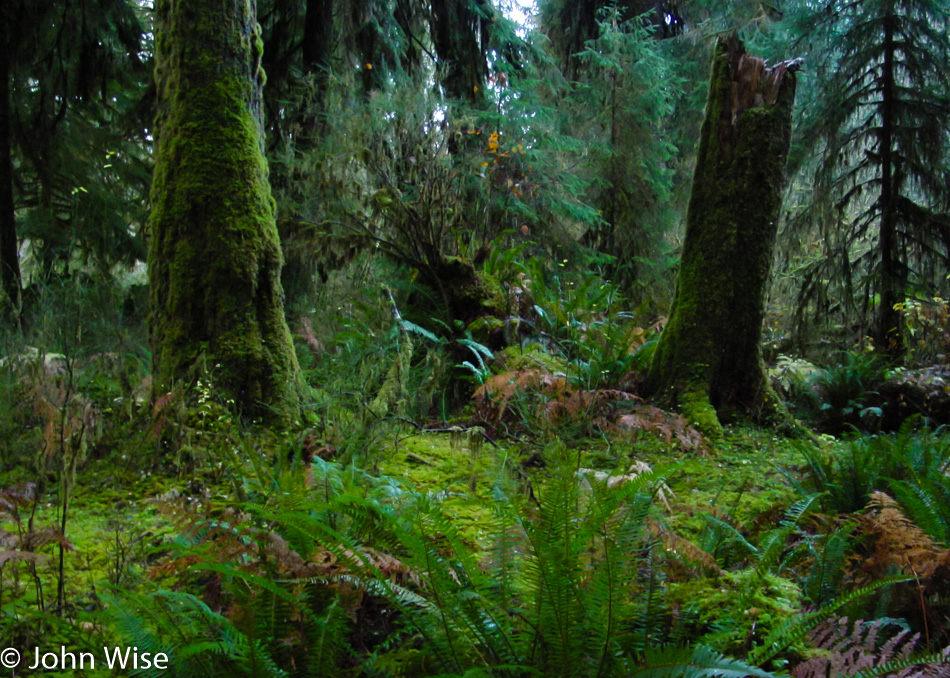
This area of land was carved by glacial activity and, over the thousands of intervening years sat evolving and growing, undisturbed by humans. Most of those lands have been cleared of trees that had grown for more than a hundred years, these small pockets preserved by the Olympic National Park are what remains. Our world, which had been natural, is turned into a sideshow where we pay a small token to the caretakers who invite one and all who can pay the fee to witness the last remaining freaks that are placed on pedestals curated like a corner of Disneyland. We, the people of Earth, do not make life; we harvest it, burn it, exploit it, and move on. The symbiosis of existence is skewed towards the dumbest of creatures that walk upon our planet.
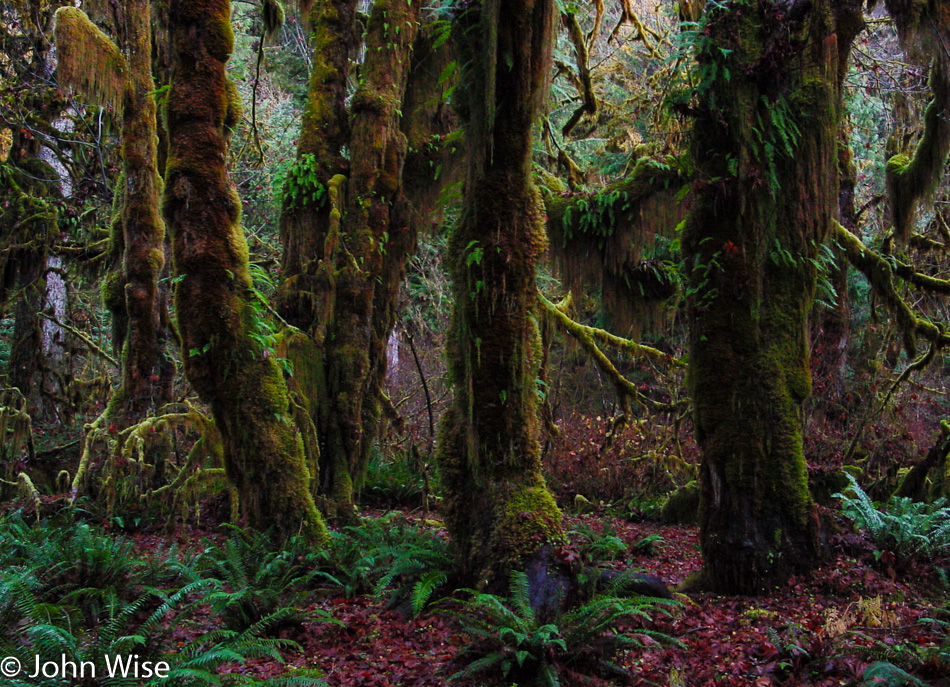
Like legs of the sky that hold up the clouds, these tree trunks share the burden of being the last of their kind. Moss covered and heavy with the life they have evolved to host, their time is not certain, and under the guise of progress, we could also move on them when convenient to make the money that will somehow support the human population. Without them, the clouds will certainly fall and evaporate. With the fall of the sky, we, too, will fall and evaporate. Maybe then nature can get on with grooming itself to once again find a balance.
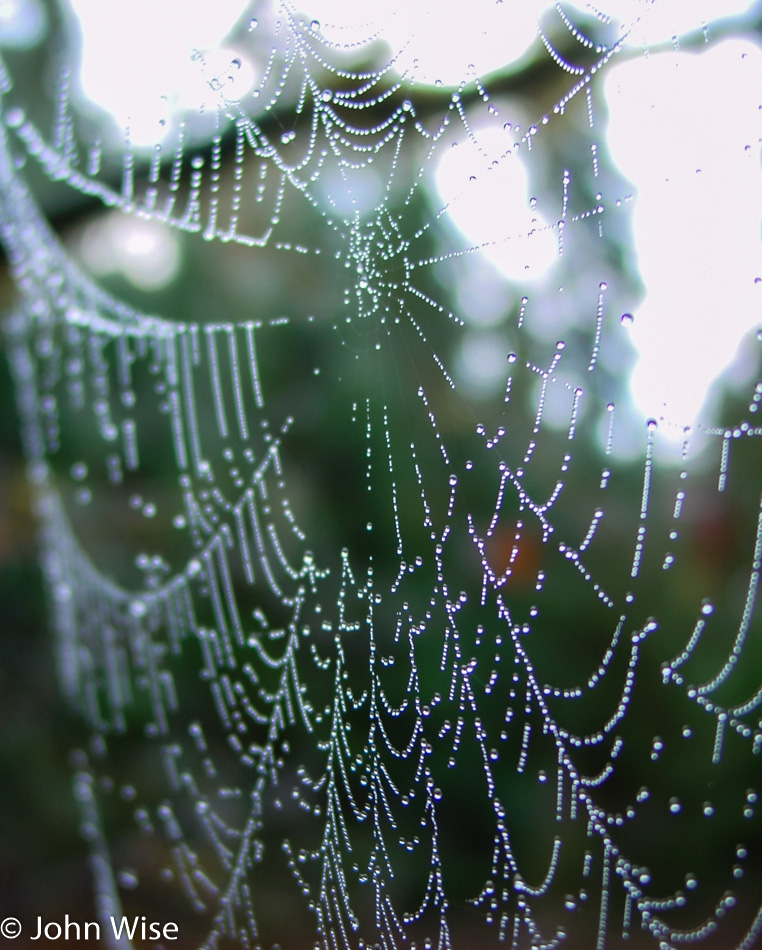
Left undisturbed and not eaten by a predator, the spider will live its existence dancing through the patterns of what its DNA has programmed it to do. Barely visible and often unseen by the flying insects snared in its web, the spider lives on the edge of its creation and takes what is needed. It could be said that man does the same, the difference being that the spider doesn’t destroy its environment for the next generation. If I try to be less emotionally reactive about my impressions of our haste to destroy, I suppose I can admit that we are the incarnation of a two-legged tsunami, a volcano, or a deep freeze that nature delivers to radically alter the status quo. Still, I find it abhorrent that the collective minds of our species are still digging out of the fecal decay of primitivism so readily accepted by the majority and that we race into our ignorance while obliterating most of what is profoundly beautiful.
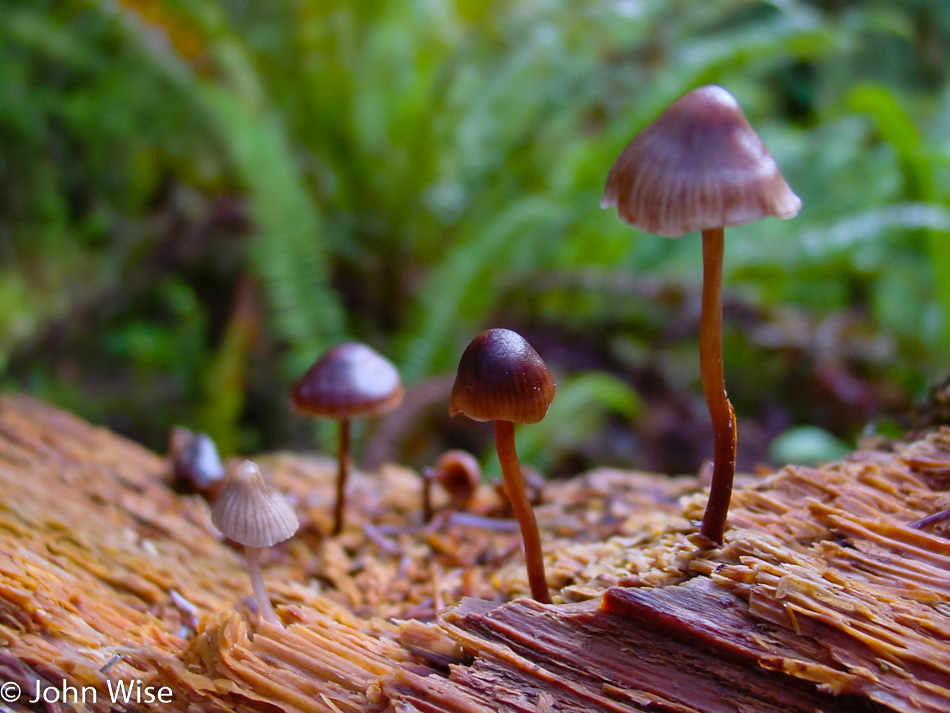
In all of our planetary nature, death is but a substrate for a new life. The fallen tree does not go to waste; it is the nutrient base for life that will continue to grow within and upon it for many years to come. It will be a harmonious relationship that, over time, will give rise to a new life that evolves to respond to the changing chemistry of what happens over time.
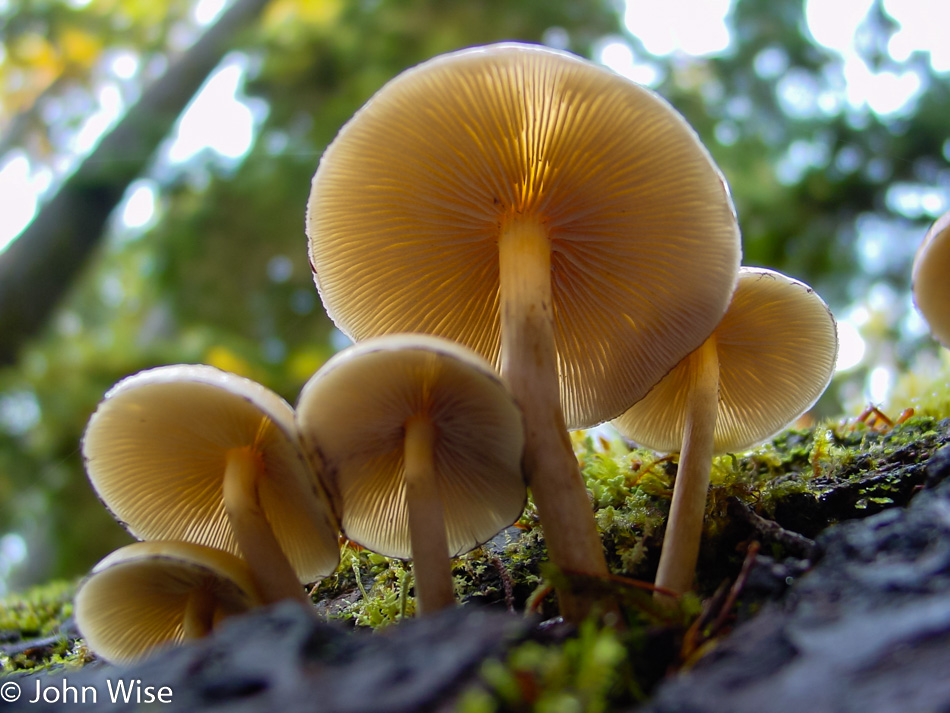
Contained in these gills are spores waiting for maturity before being distributed to help grow the mycelium network that is vital to the health of this forest. If only more of us humans understood our role in the network of people to support our environment, we might one day grow up to be wiser than these mushrooms. Too bad it doesn’t look like it will happen in my lifetime.
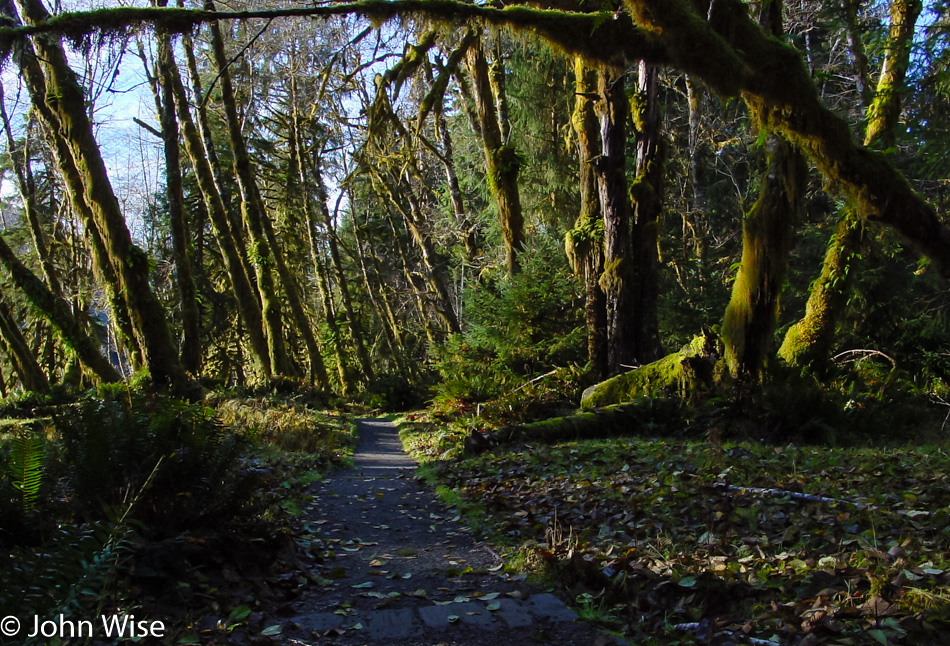
And with that, we have arrived at the Spruce Nature Trail that will take us out by the Hoh River. The forest isn’t so dense by the river as the gravel banks are scrubbed clean by periodic heavy river flows, allowing more light into the thicket. Due to the heavy rainfall, up to 14 feet a year, the earth is still covered in a heavy green carpet that begs us to linger and discover its details.
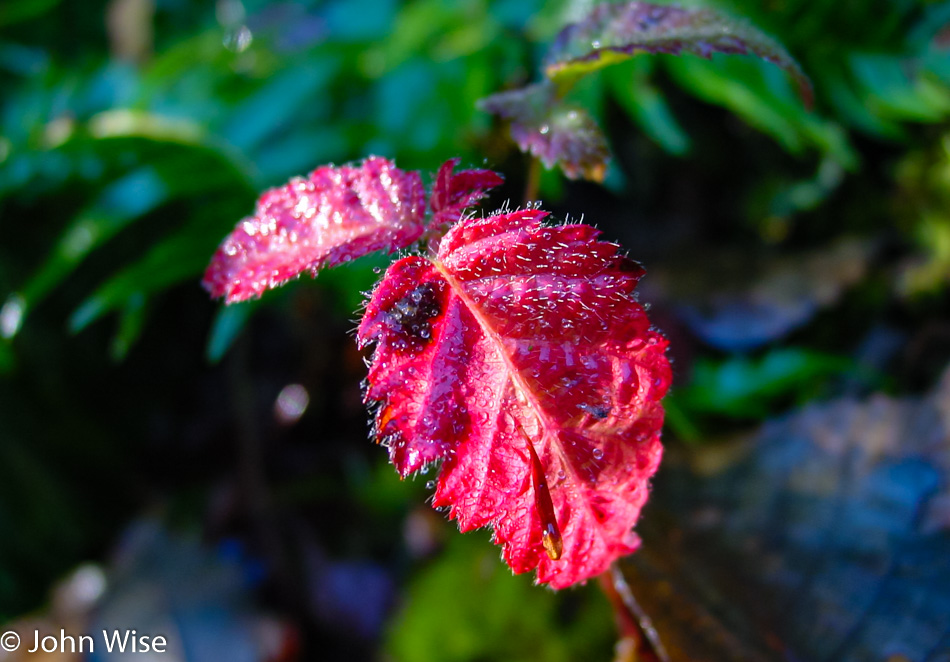
The hairs on this leaf appear to capture water droplets, I can only wonder what is the purpose of having evolved to be able to perform this for the larger plant.
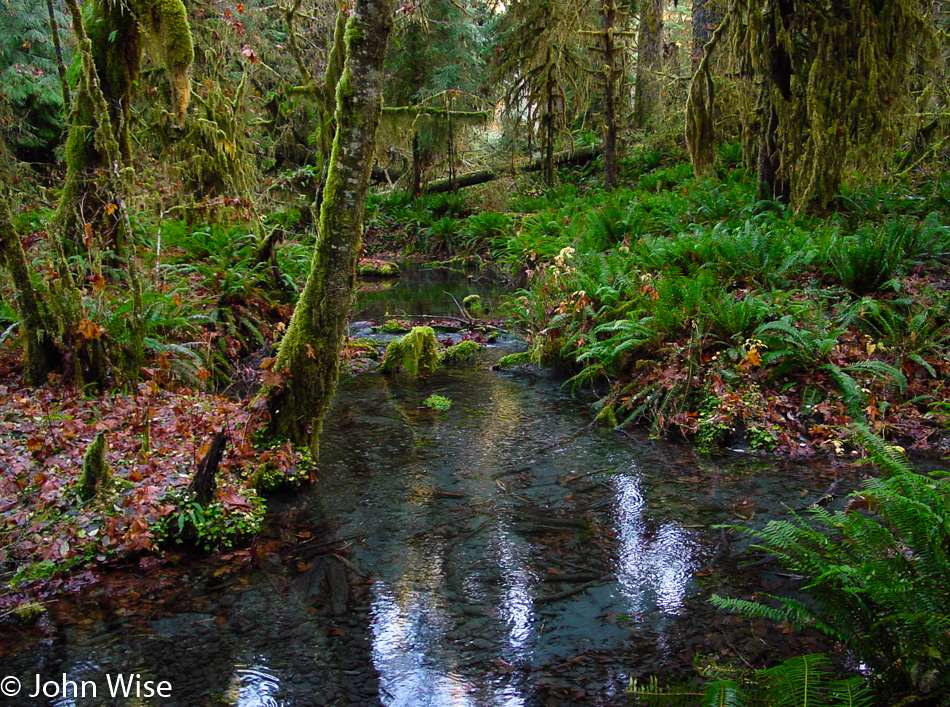
We are circling back to the parking lot and visitor center along with the noise of those who have now started arriving. For nearly four hours, we have been alone with the forest and its quadrillions of lifeforms found in thousands of species, most of which we will never see. How can humanity, who has never seen a place such as this firsthand, be so careless and disrespectful as to not care an iota if it is turned into houses or a parking lot?
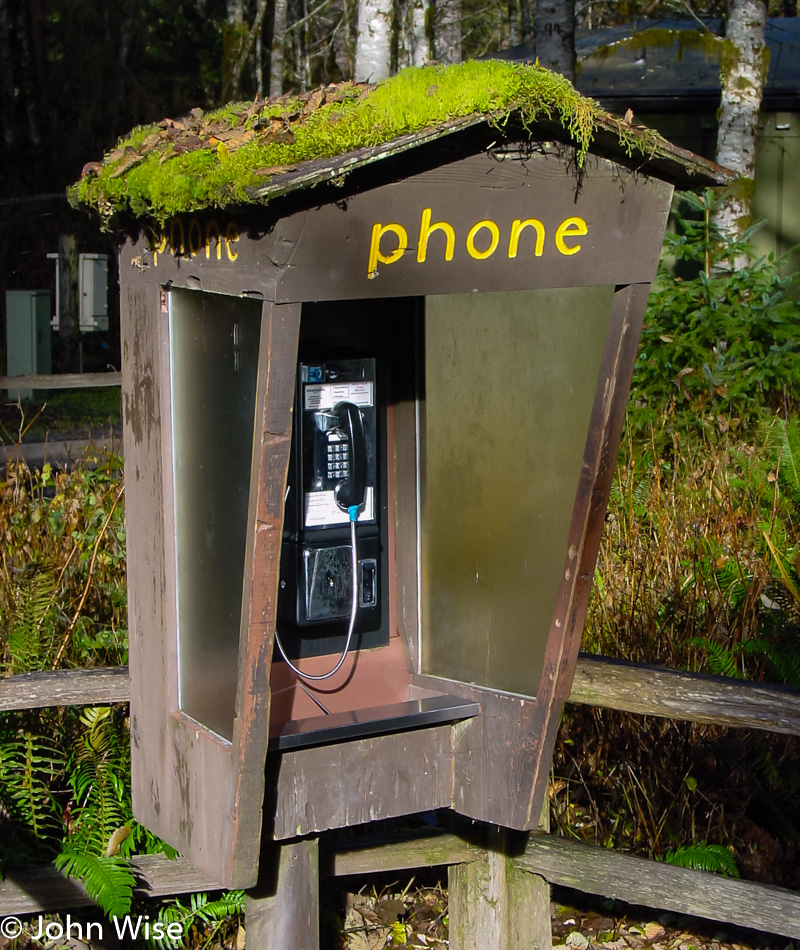
Sadly, there is no one to call for answers.
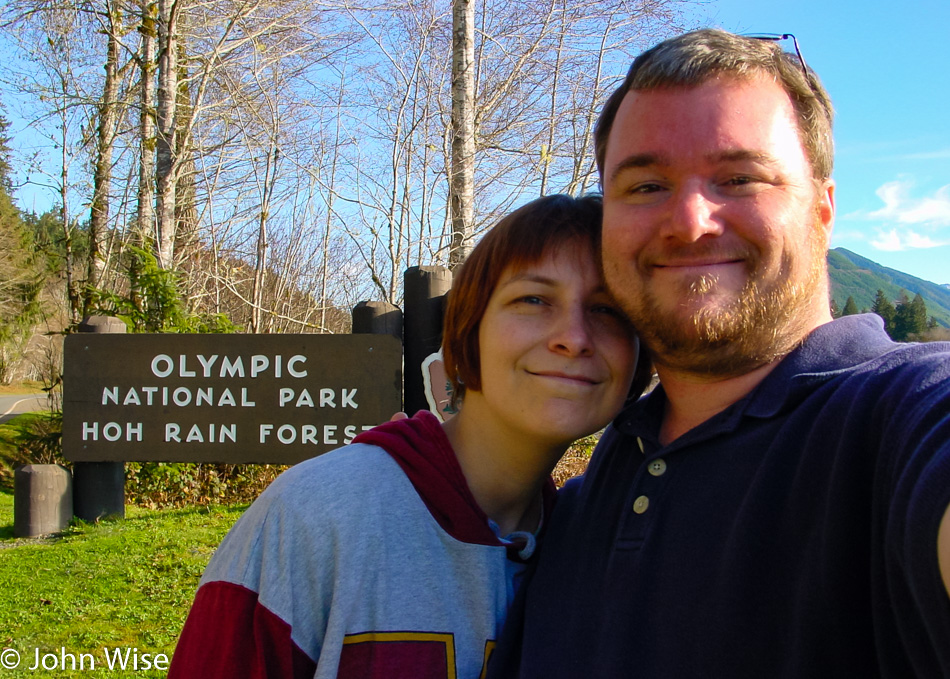
We have fallen in love with the rainforest of Washington but will not be able to adequately visit the Quinault part of the rainforest further south due to our crazy ideas of time allocated to do a million things per road trip, though we will have a small peek in. Hopefully, there will be another visit in the future that will allow further exploration of the Olympic National Park.
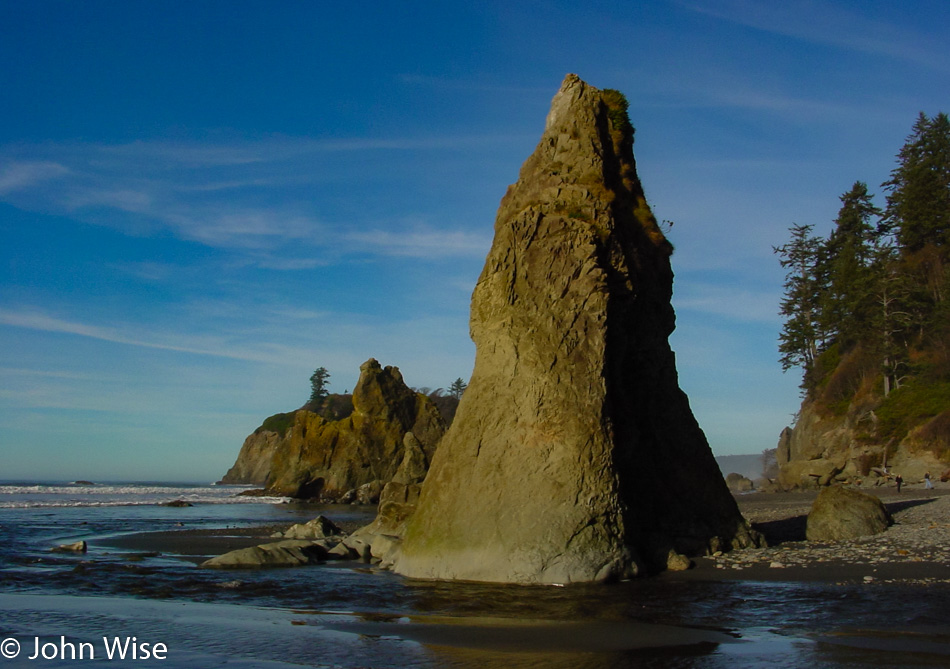
The shiny object known as the coast quickly distracts us from our contemplative, slow journey into the forest.
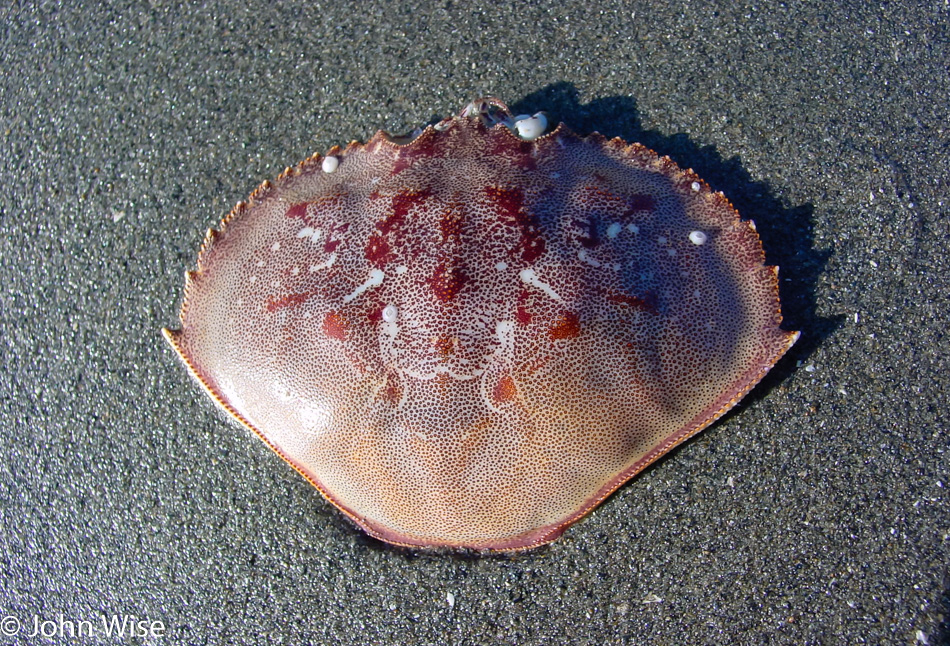
Ah, but then we spot this crab shell and have to consider the great fortune of the shorebird that had an amazing meal or the unfortunate crab who had to make the ultimate sacrifice so the bird could hunt more of its kind. The balance of life is a weird thing.
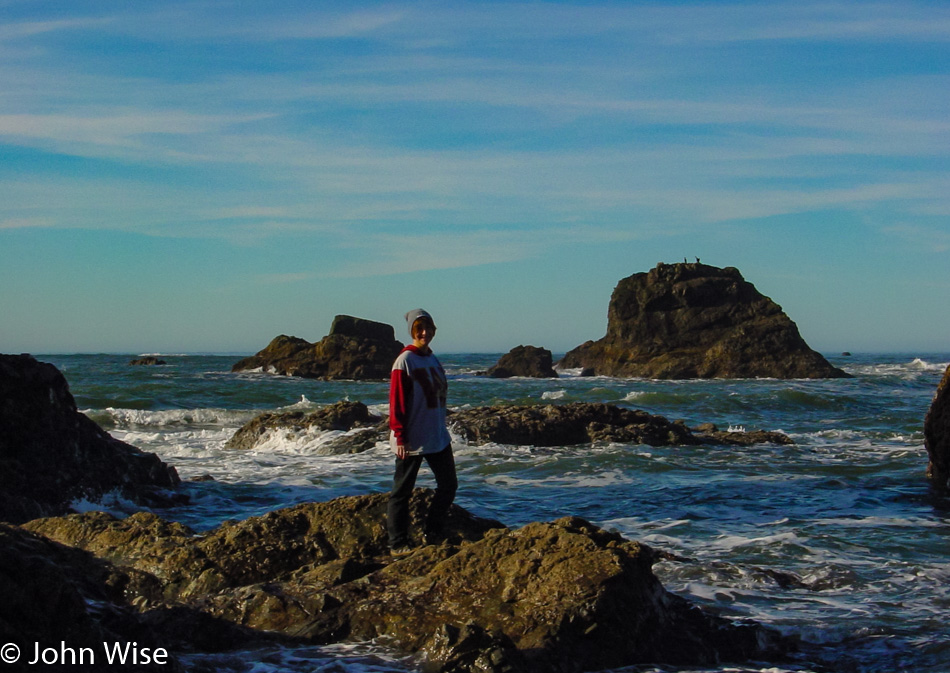
For a moment, Ms. Tidepool Huntress was stranded on an island as the sea skirted around her; lucky for us, there were no birds large enough to snatch her off her perch and peck her guts out.
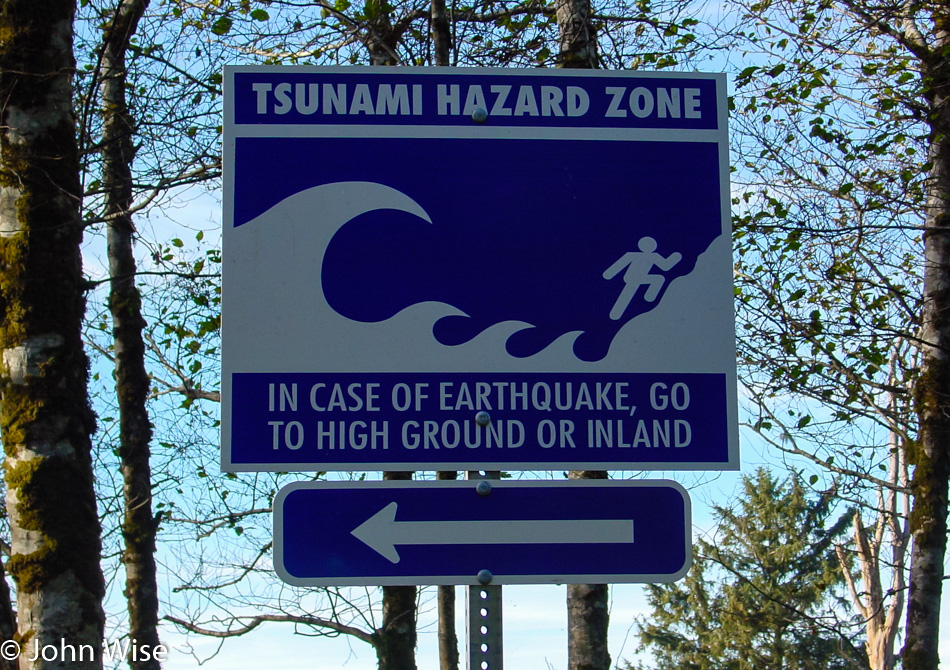
Caroline has a fetish for signs that make her chuckle. Descriptive pictures of the obvious are key to how much they tickle her before asking me to take a photo so that she may always remember that moment of awareness.
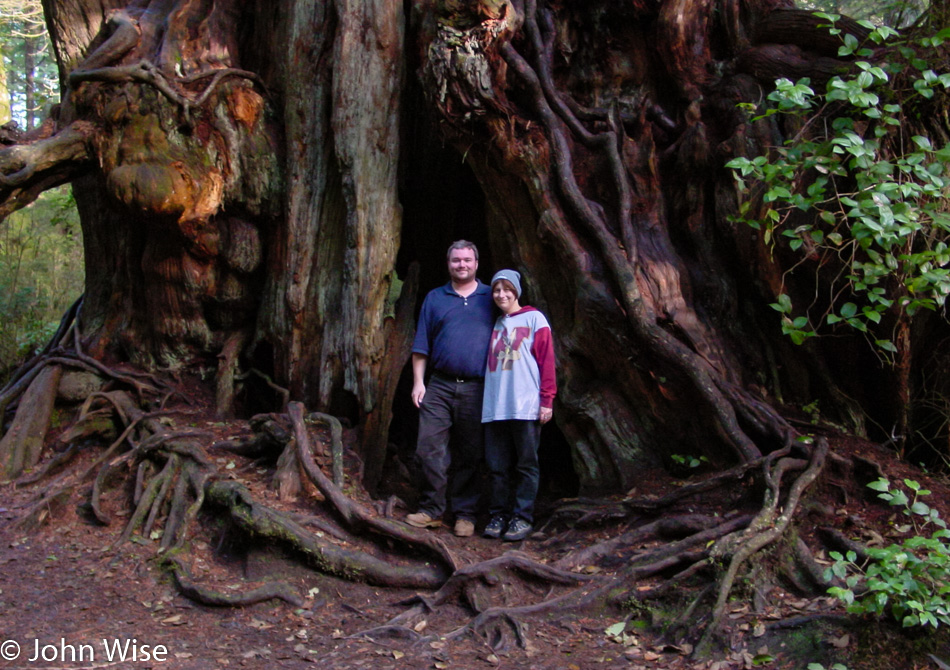
One of those rare times when we sought the help of another human as we needed to have the camera far enough away for us to remember just how big the thing was we were taking a photo in front of. And just what is this thing? It is the largest Douglas Fir tree on EARTH!
Update: On July 8th, 2016, this giant tumbled in a wind storm, and while the 20-foot stump is still technically alive, the tree is effectively gone. One of the reasons given for its demise is seen right here in this photo: people standing on its roots. It kind of sucks knowing we contributed to its fall.
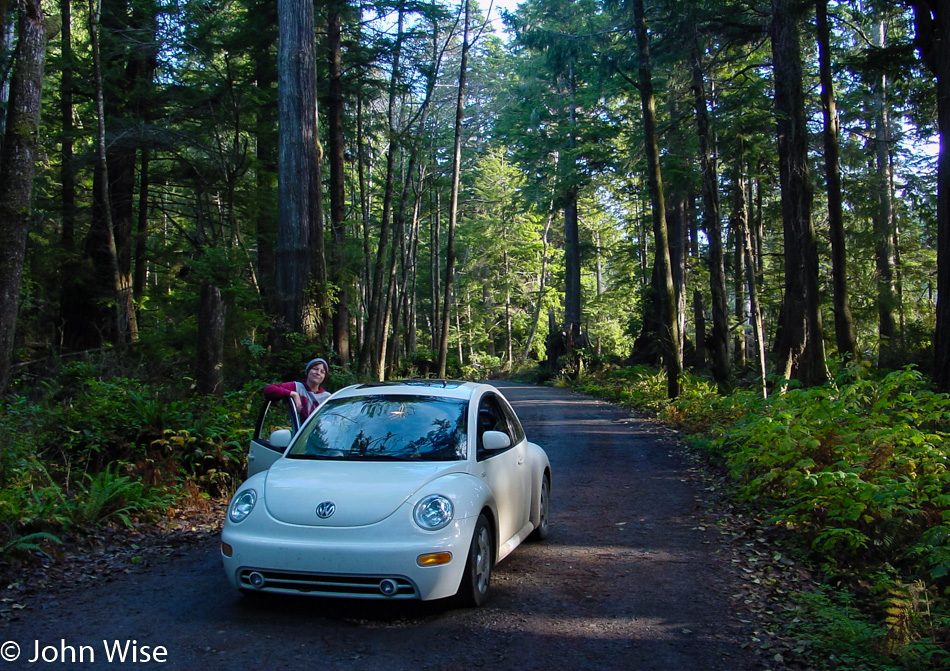
The road to the giant.
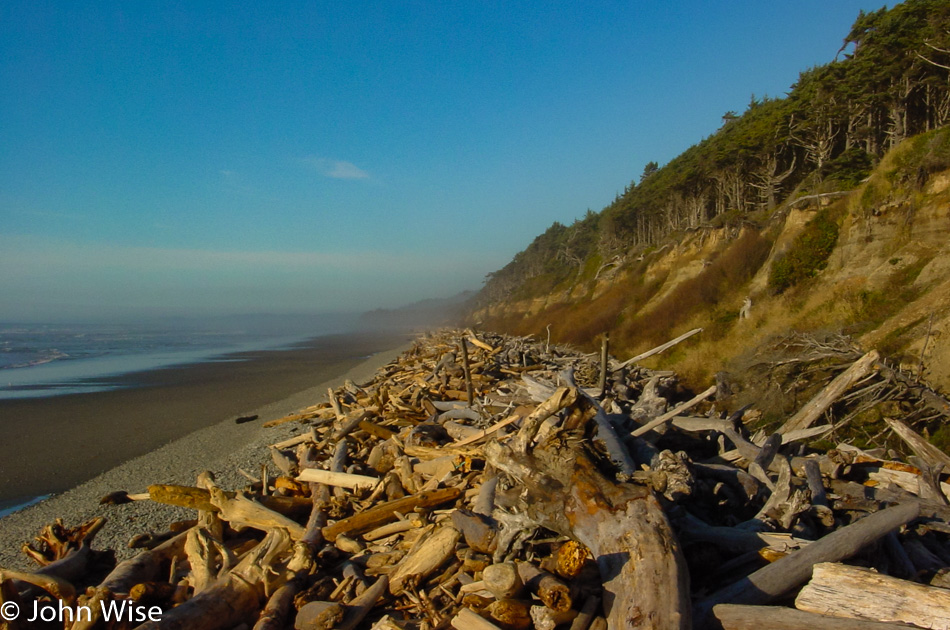
Never before have we seen so much driftwood on a beach.
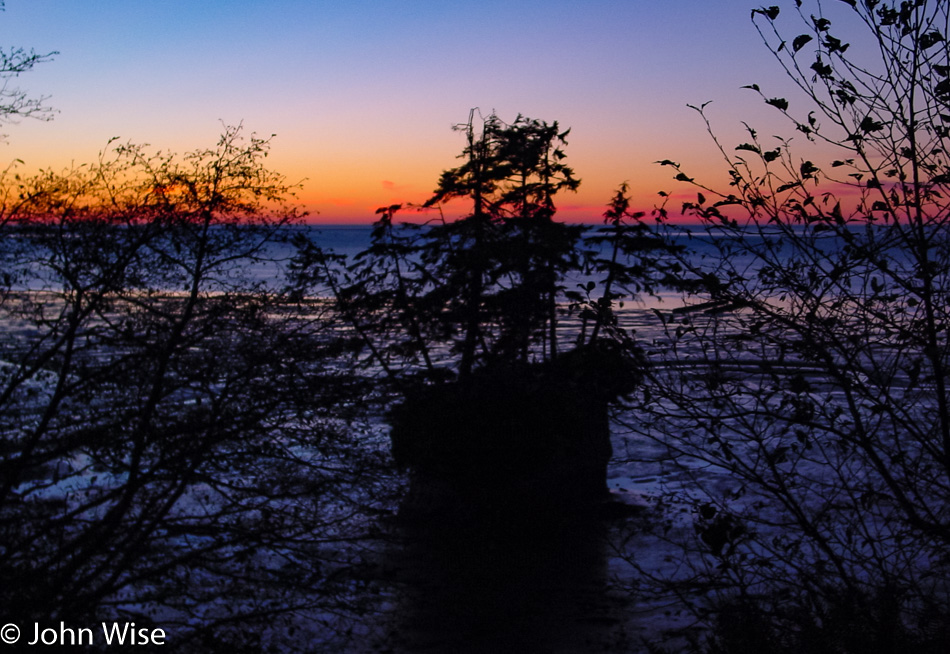
We are about to leave the Washington coast and make our way to Interstate 5, unceremoniously cutting through Oregon on the freeway well inland and in the dark. We’ll end up staying in Roseburg, Oregon.
